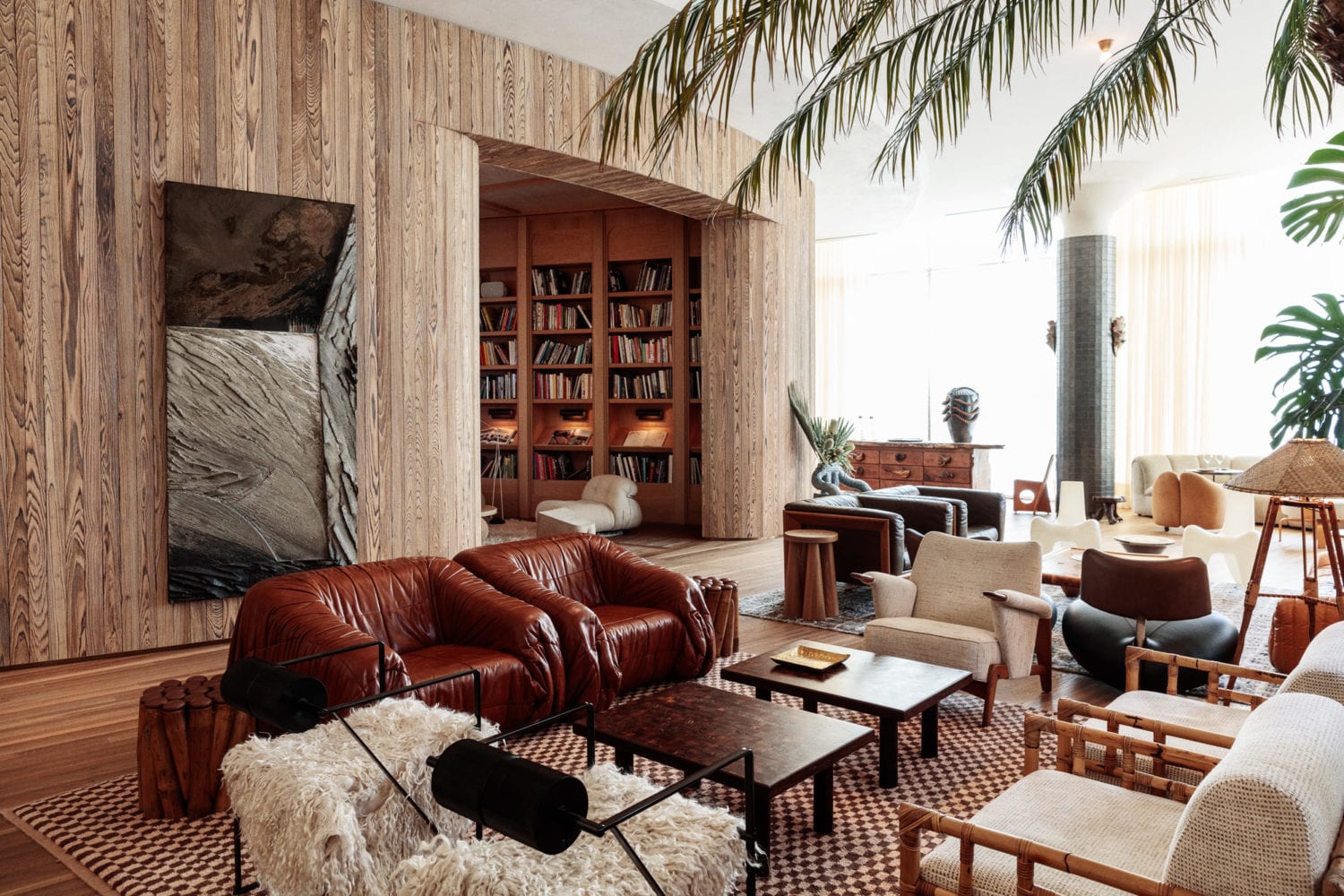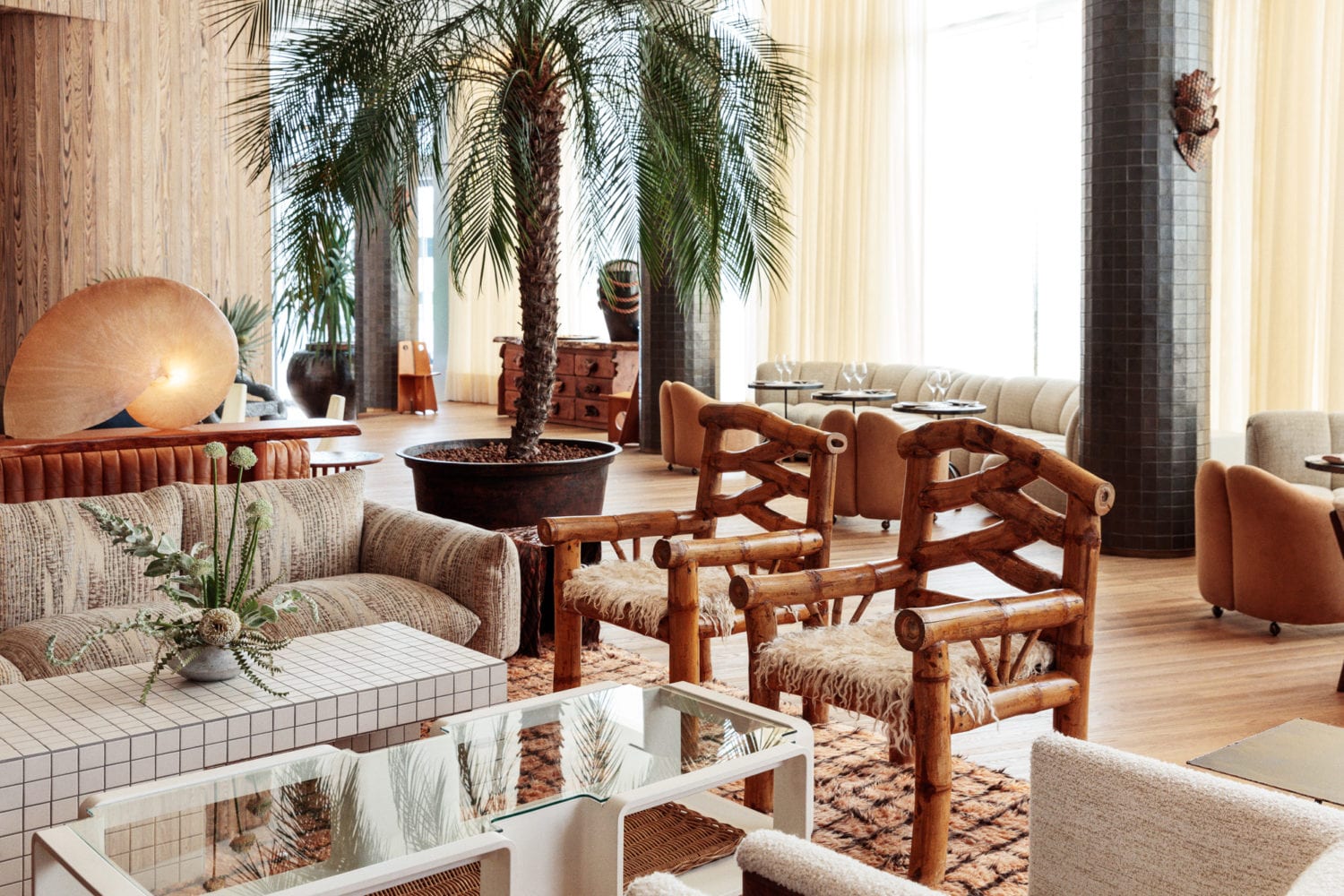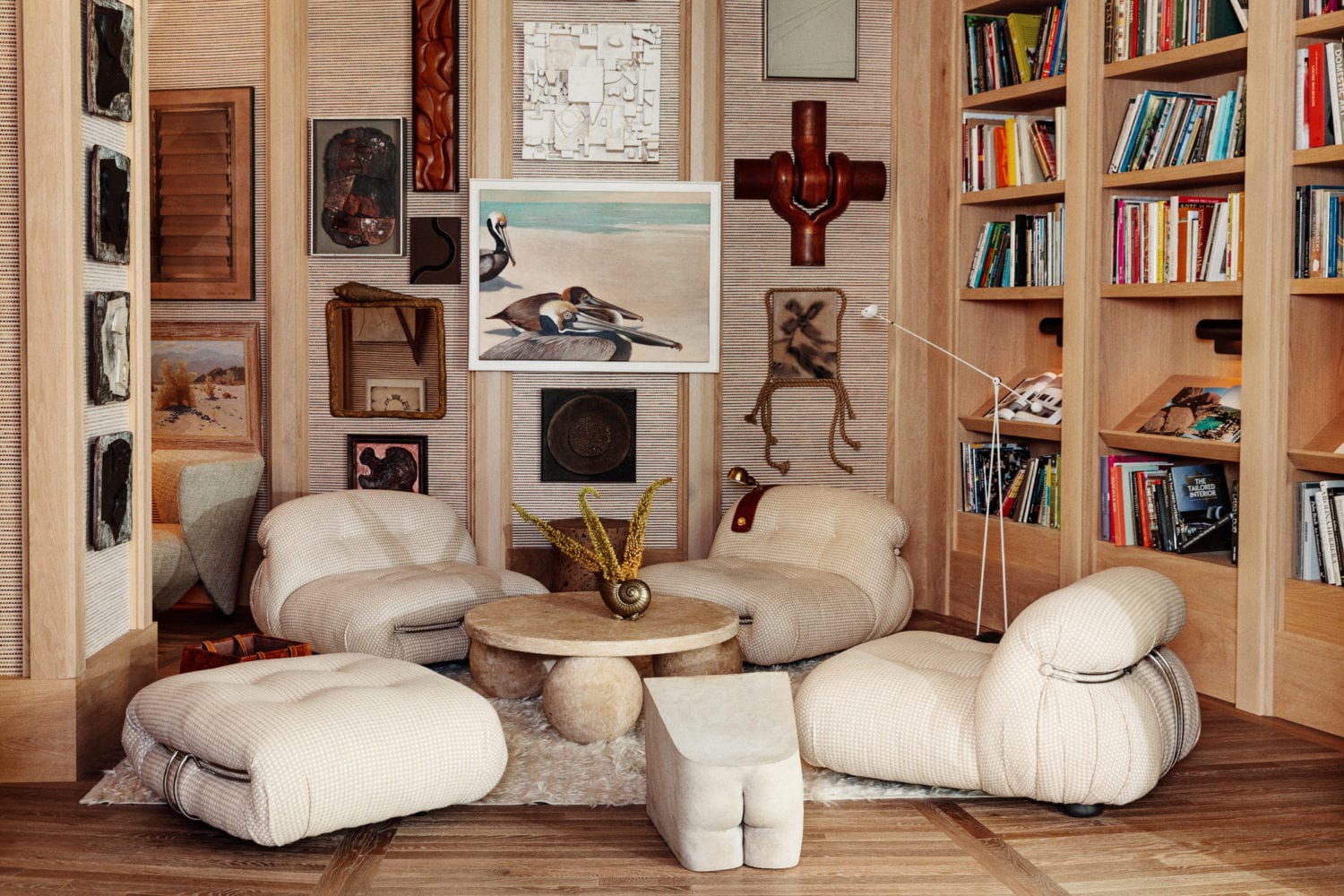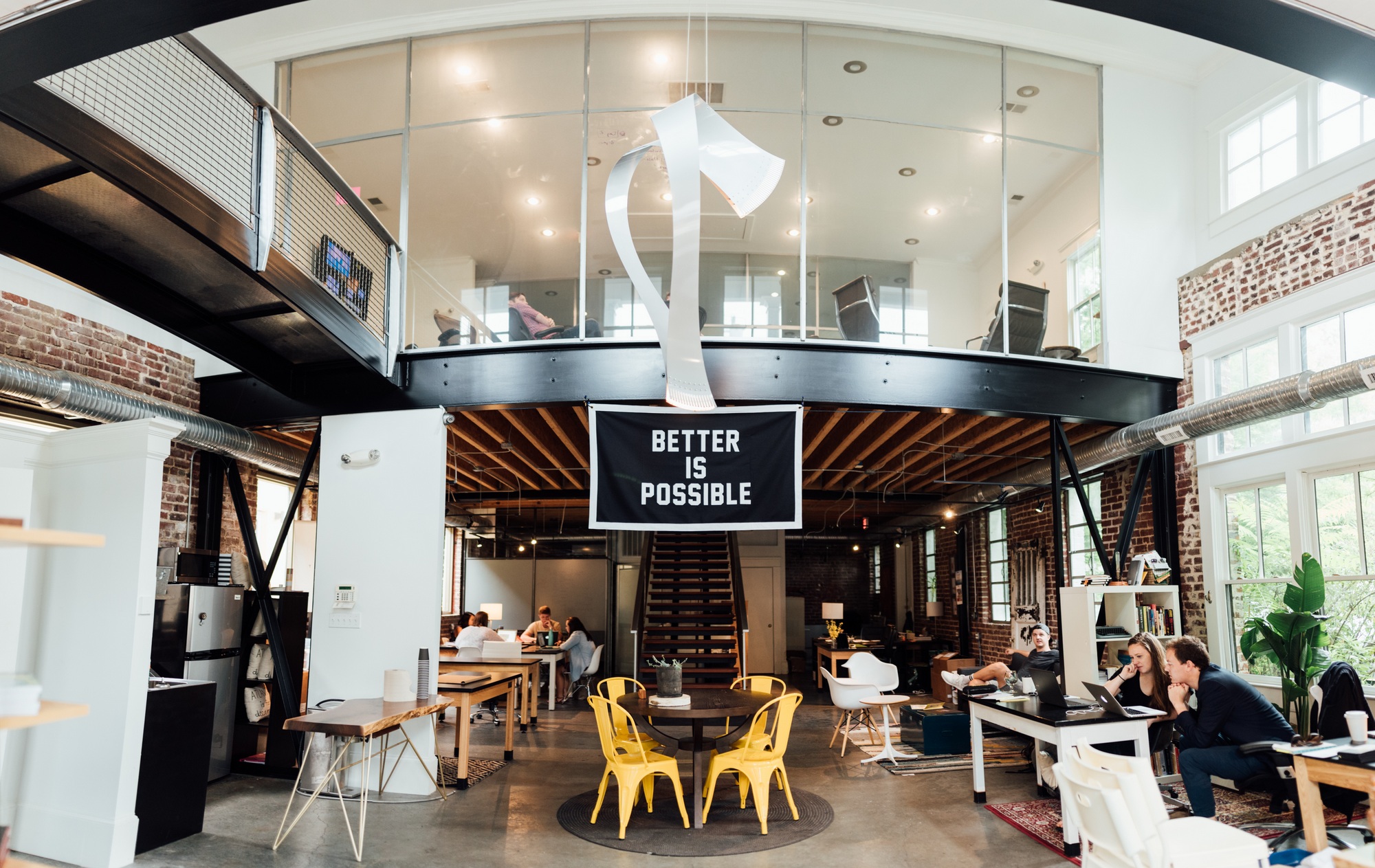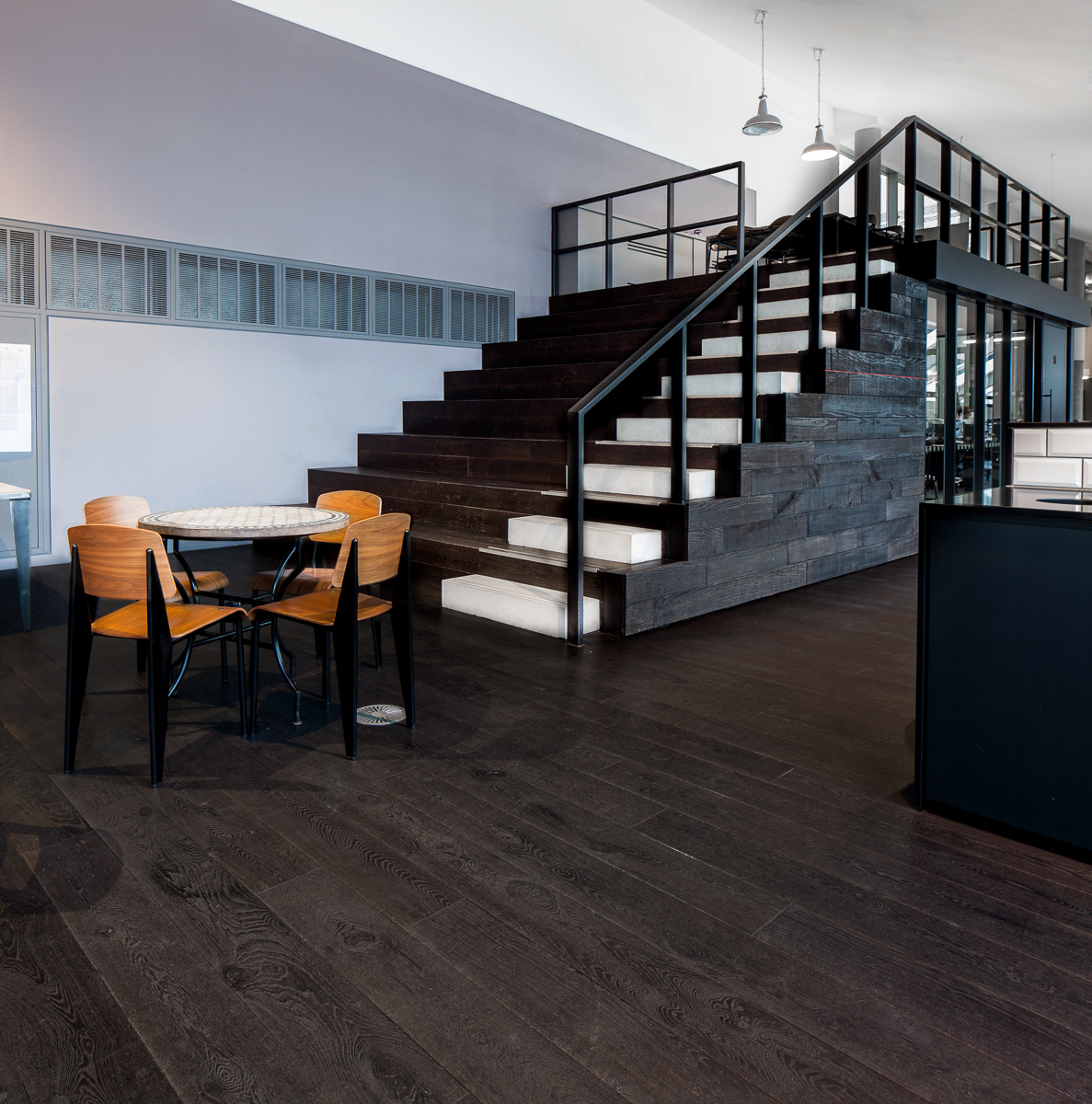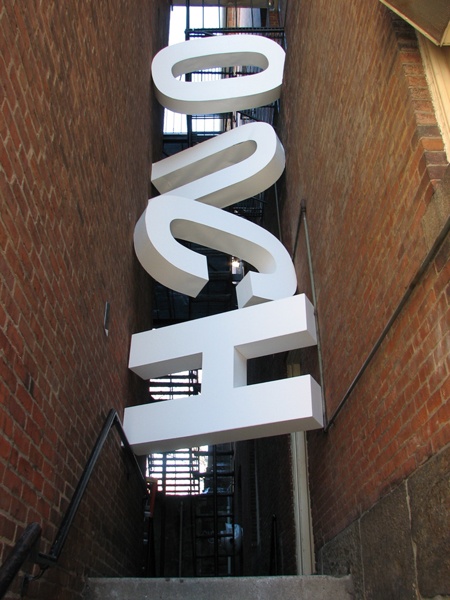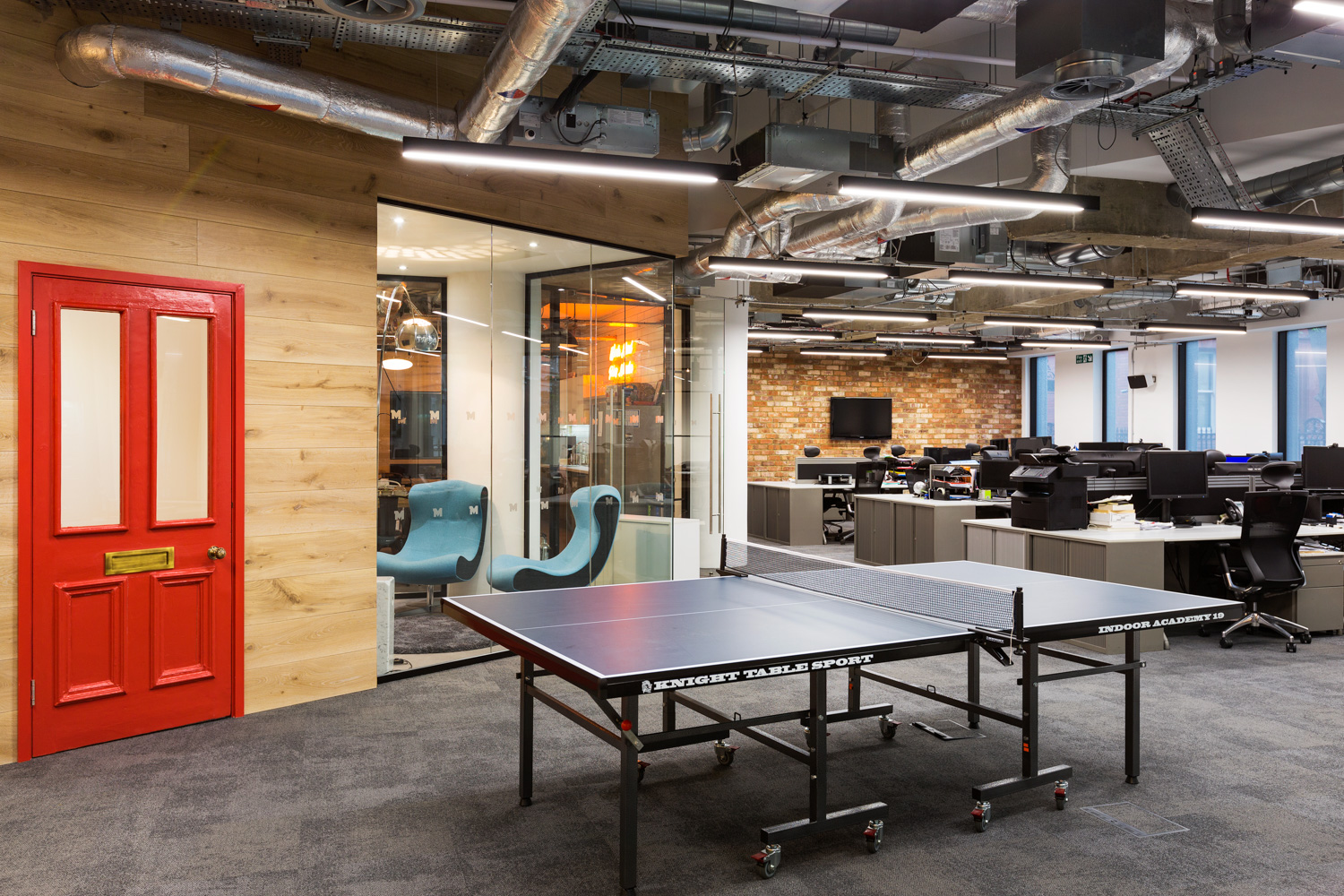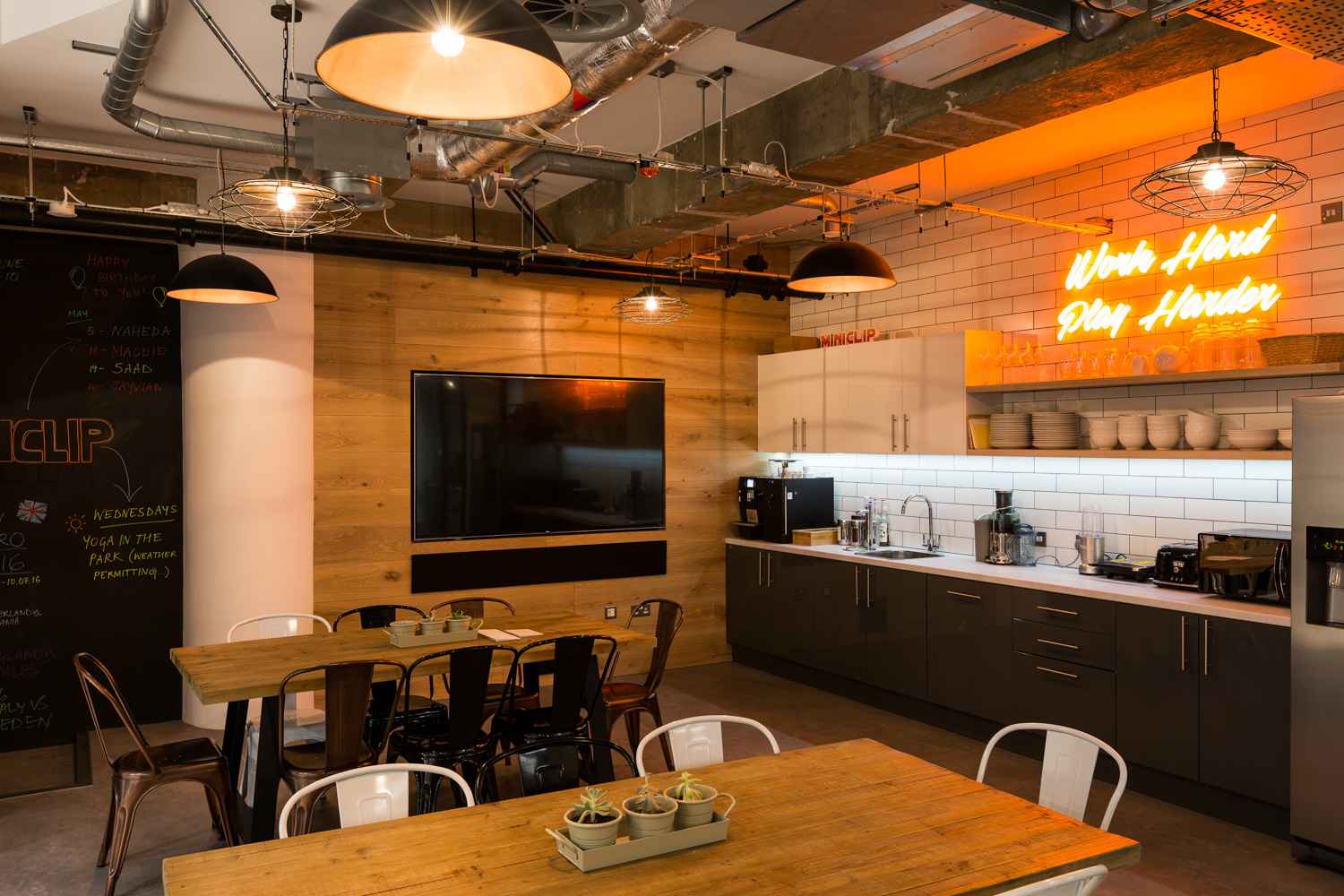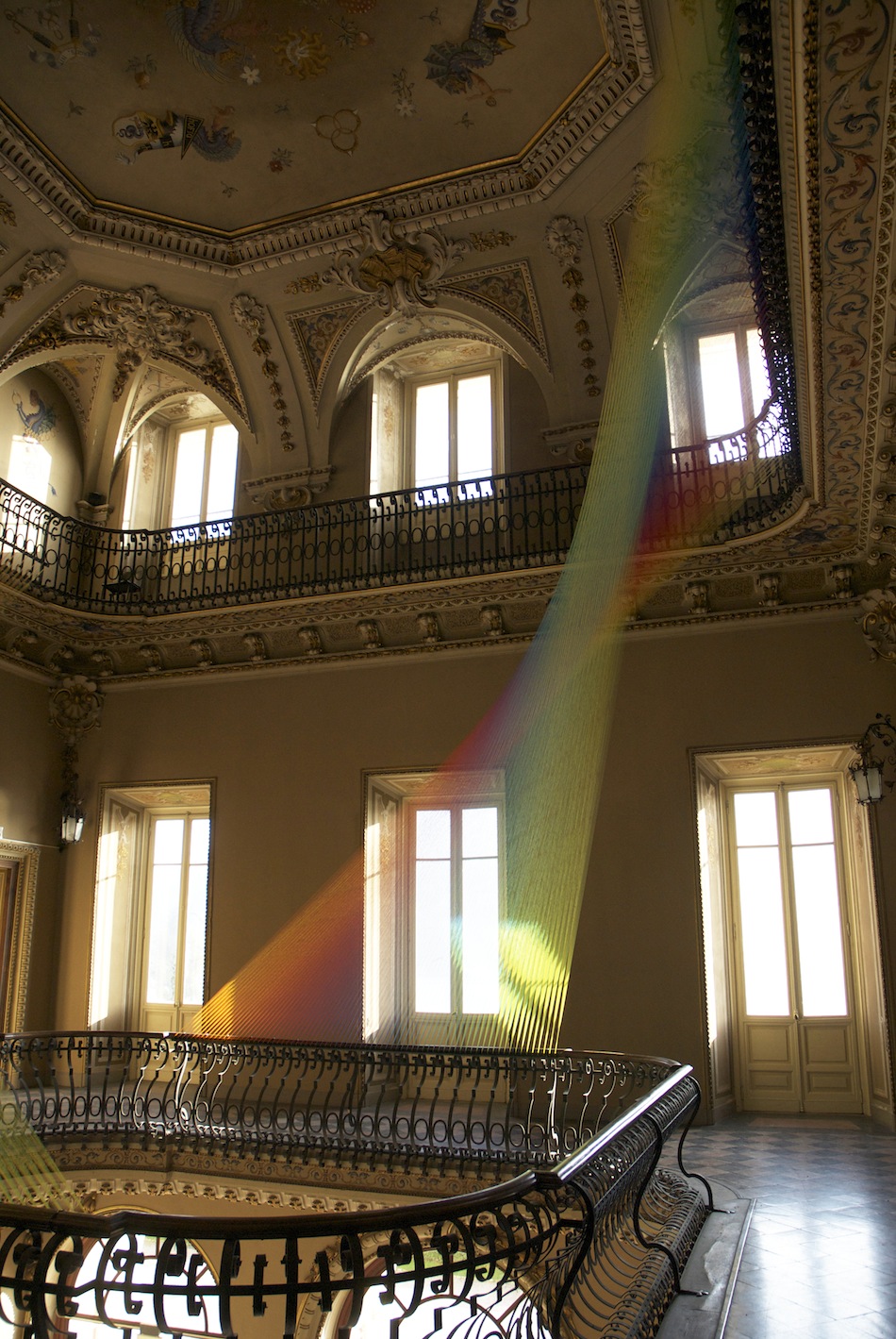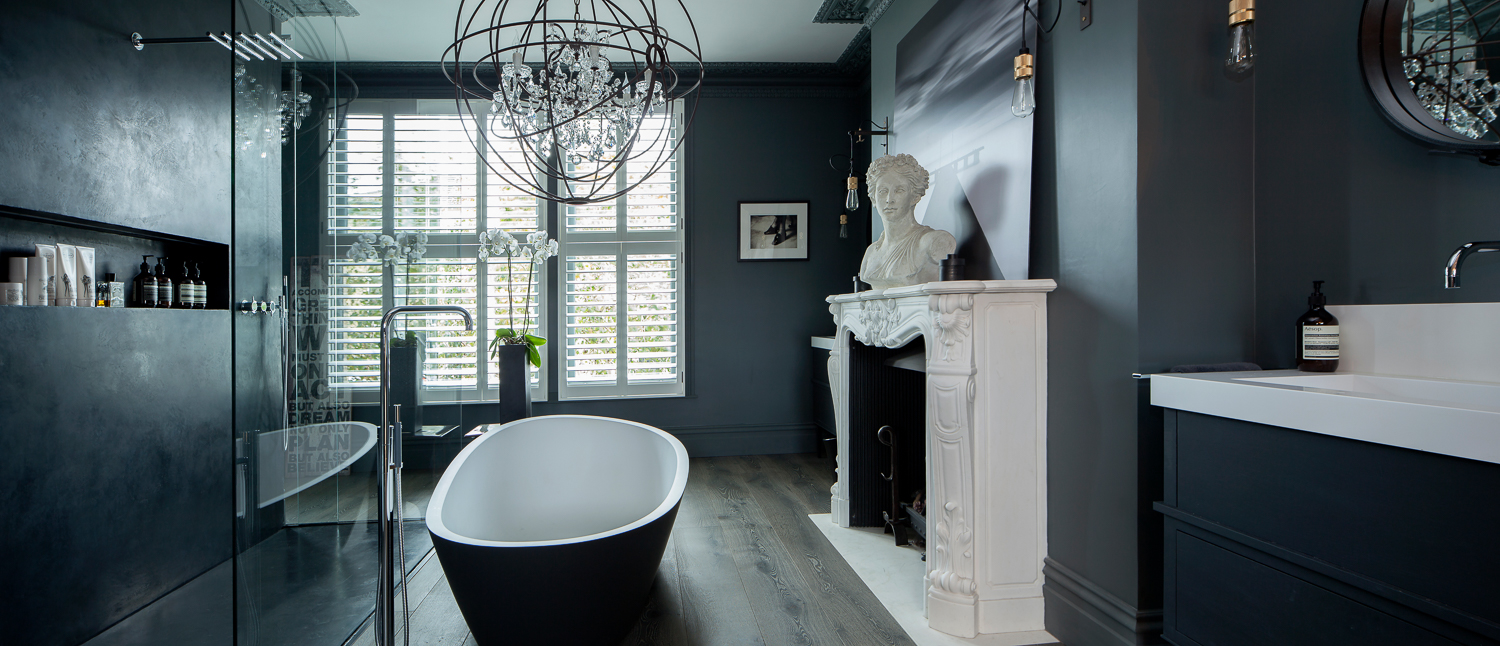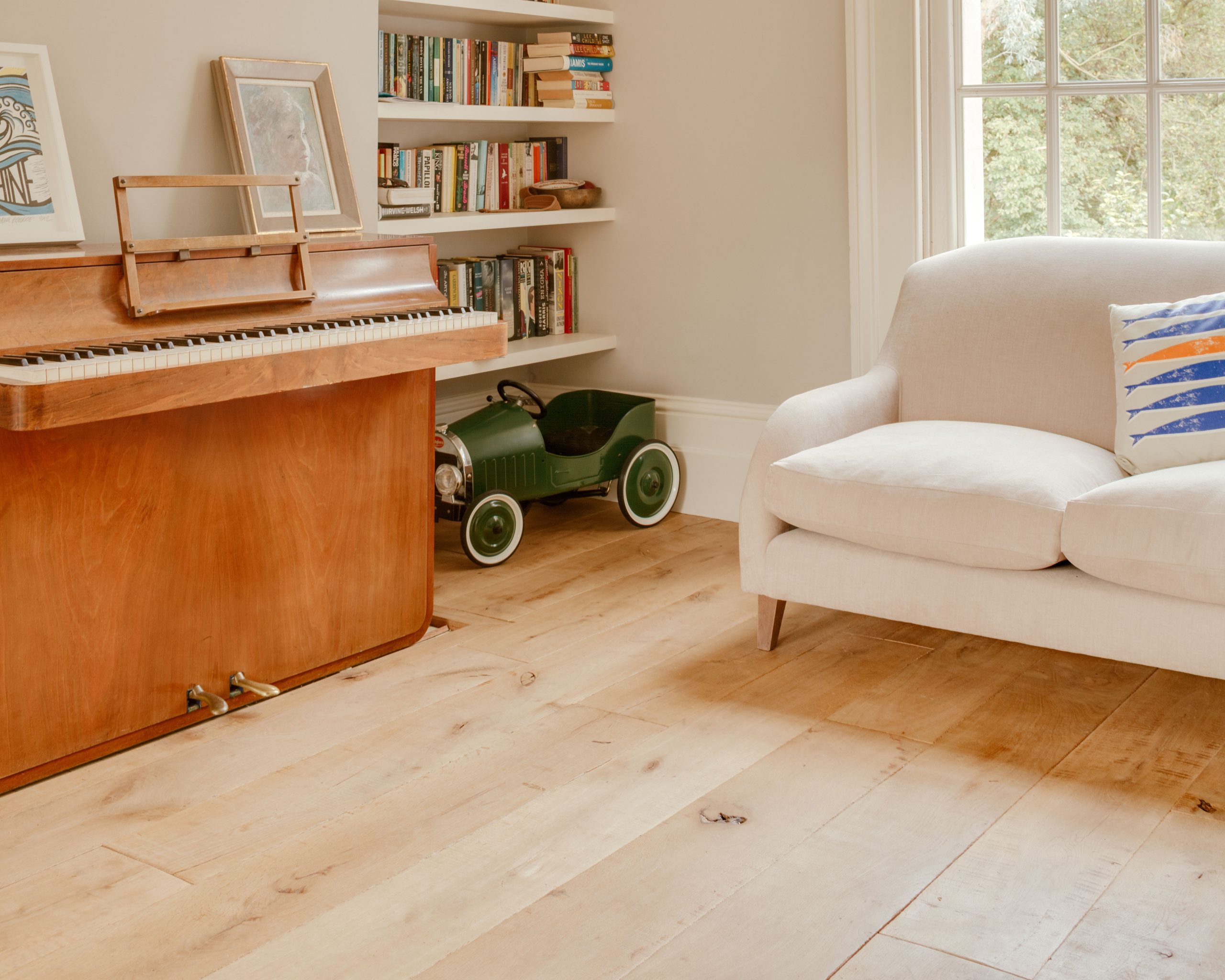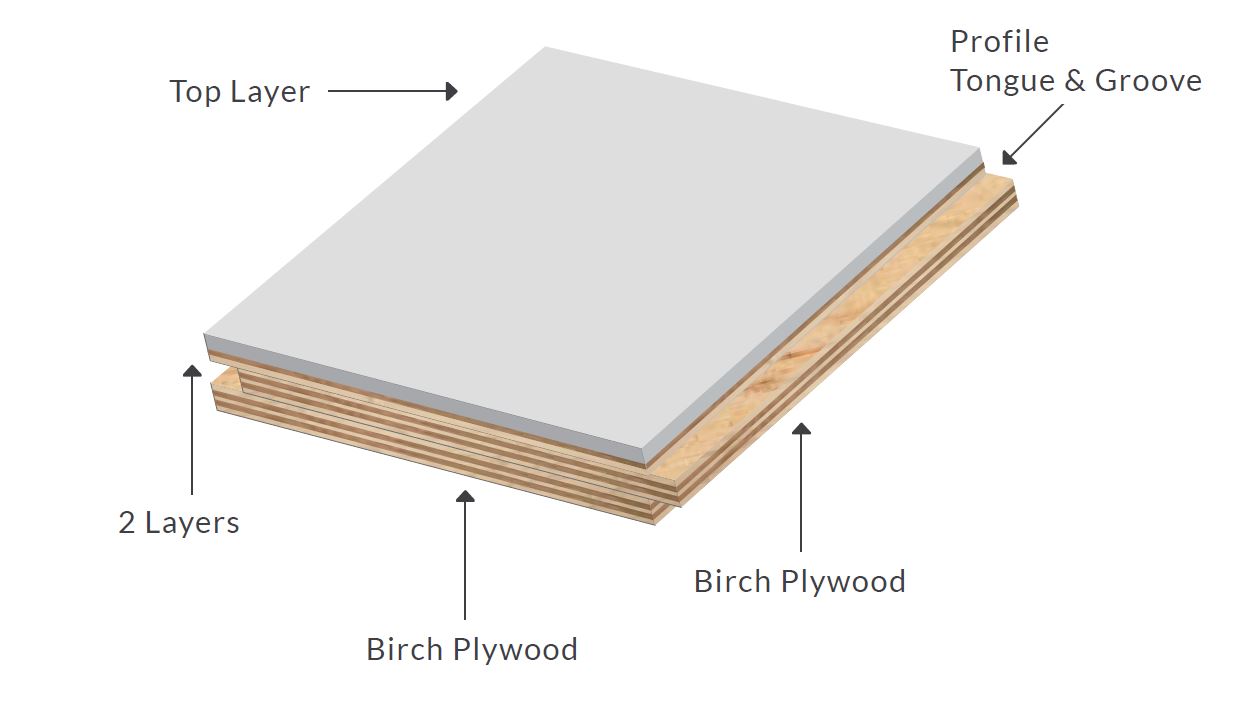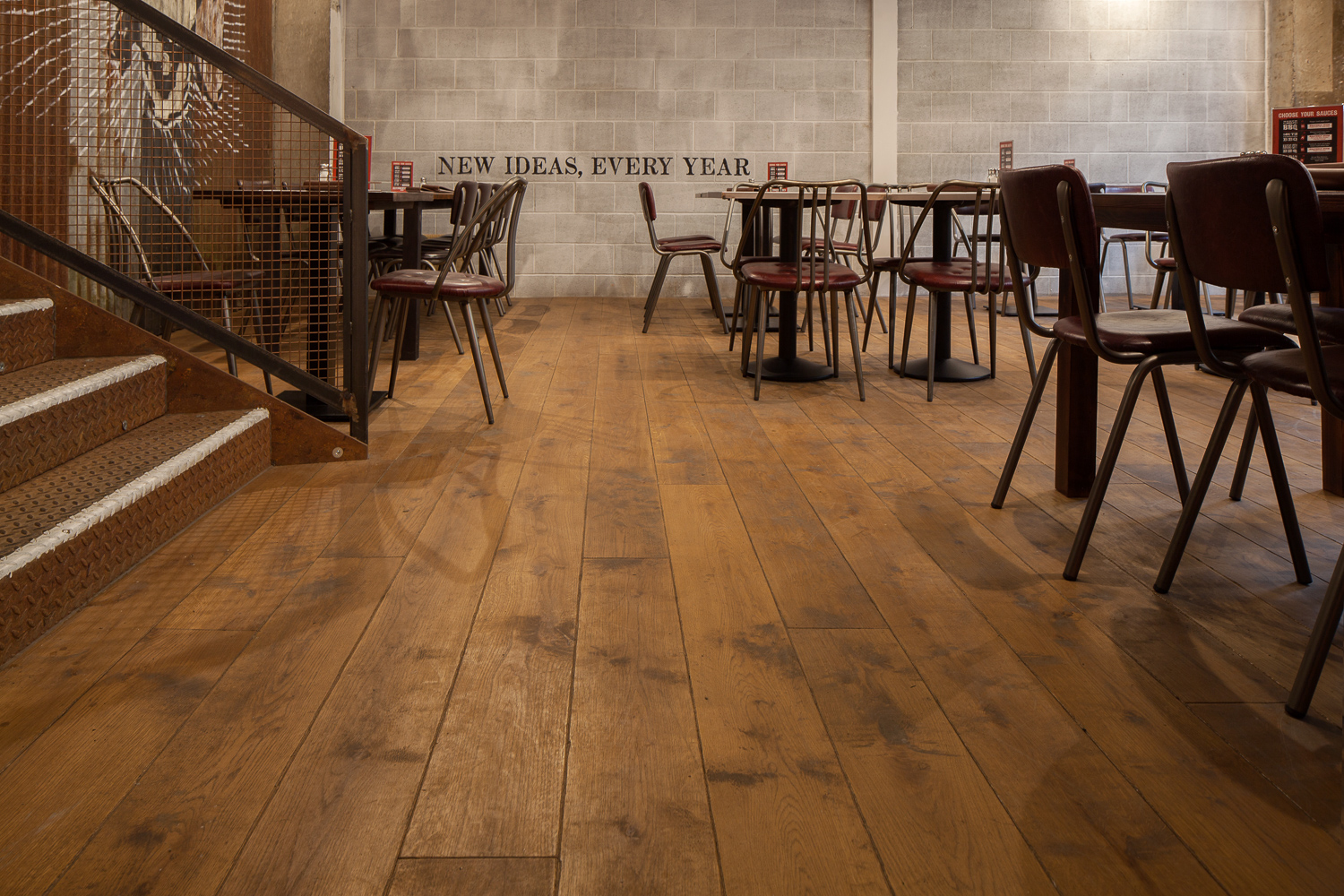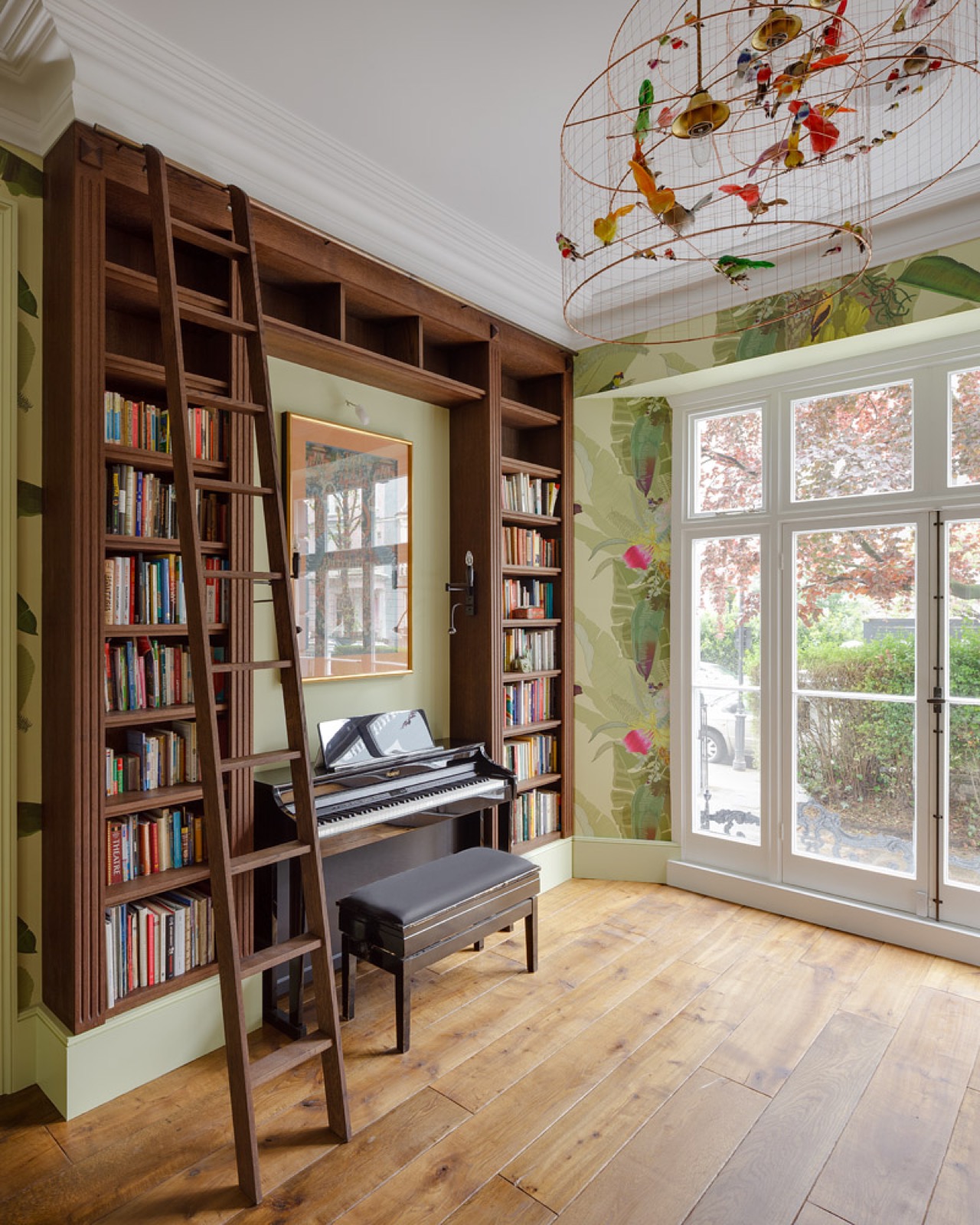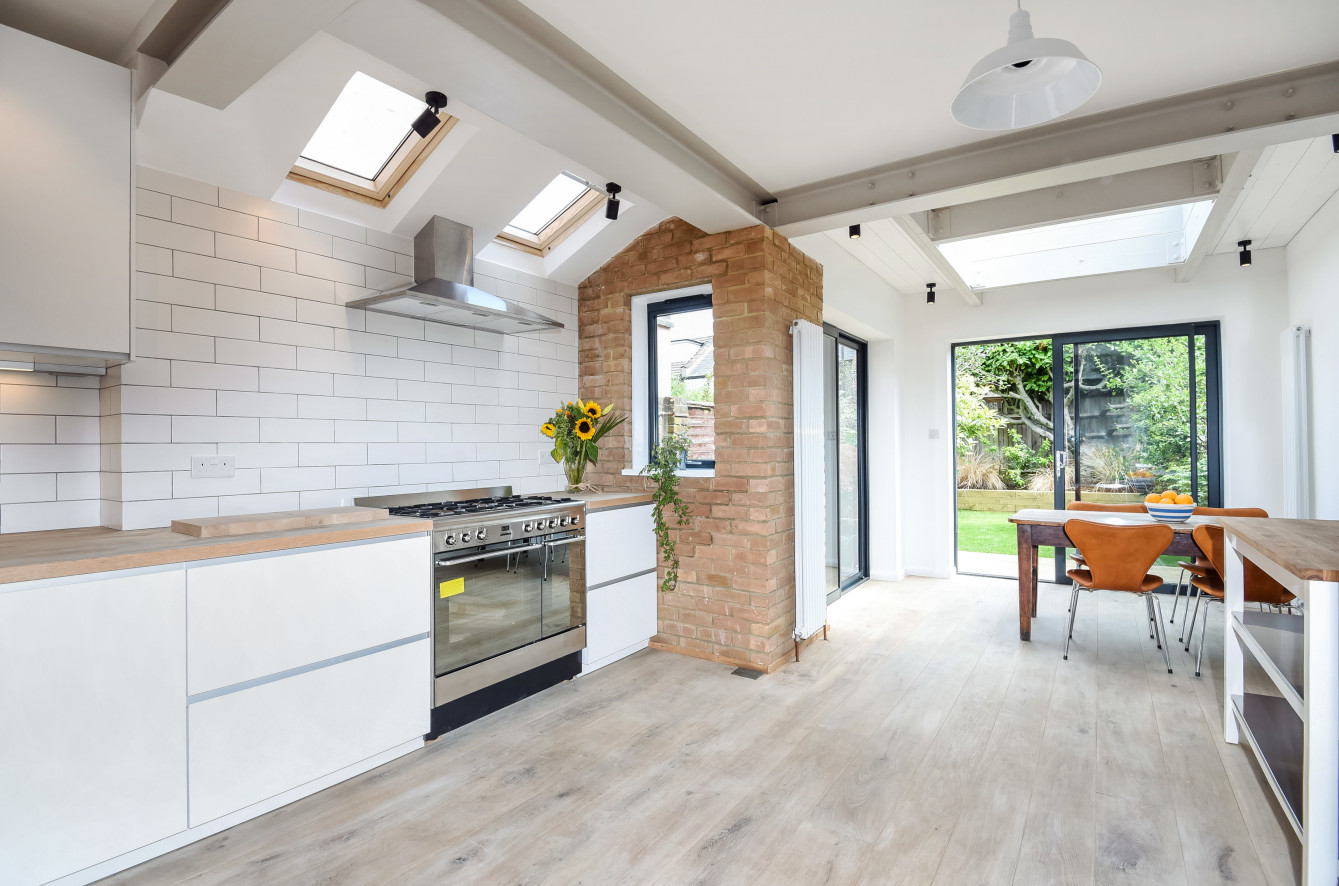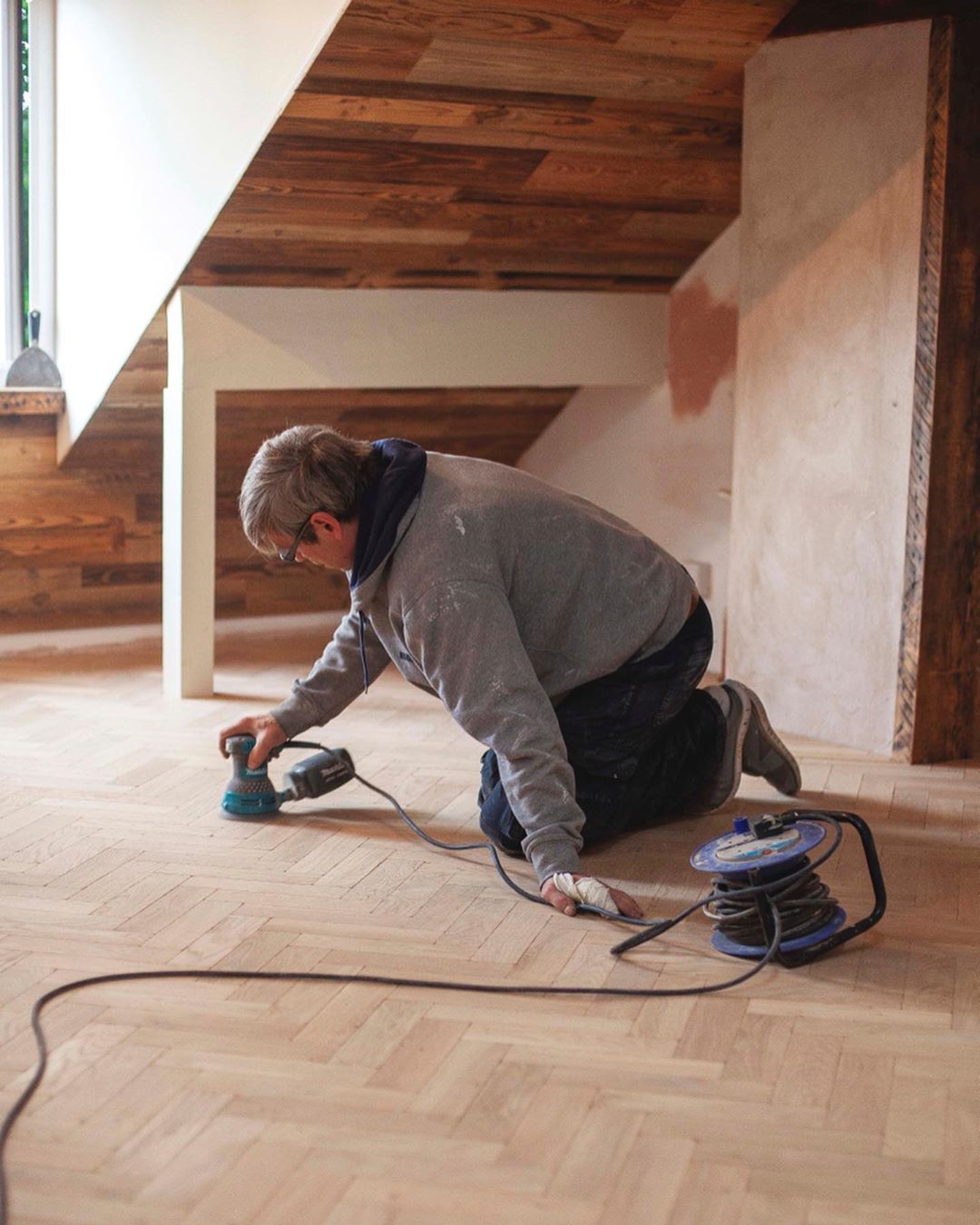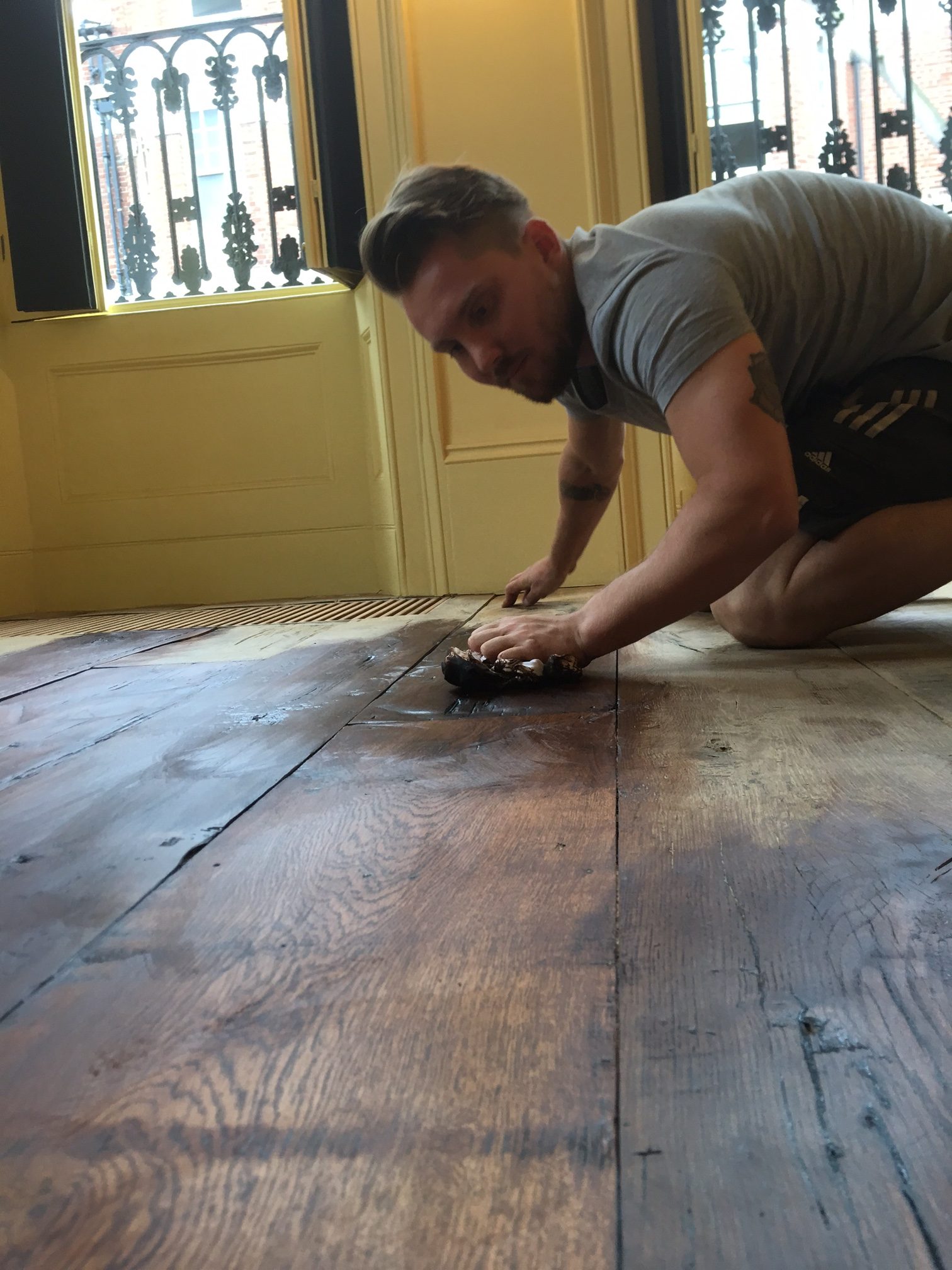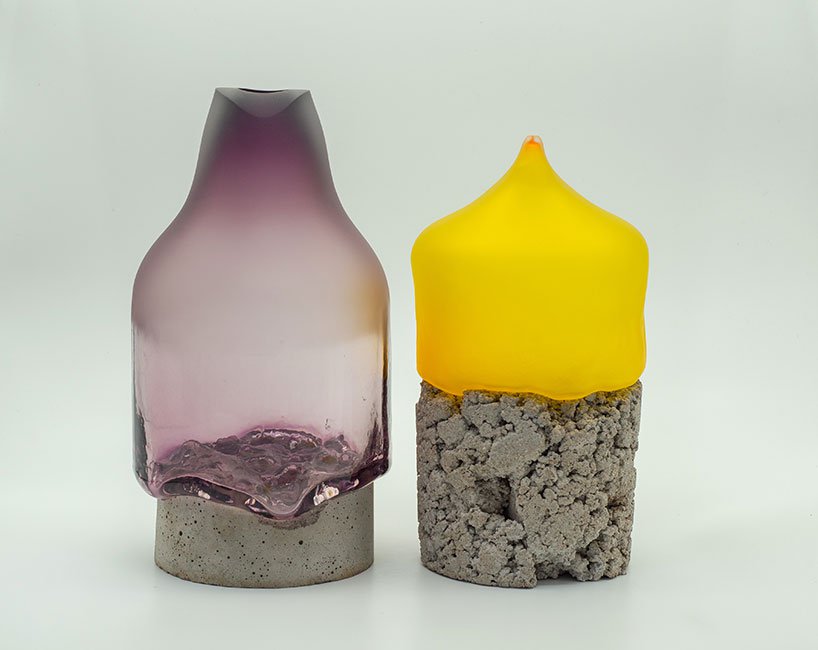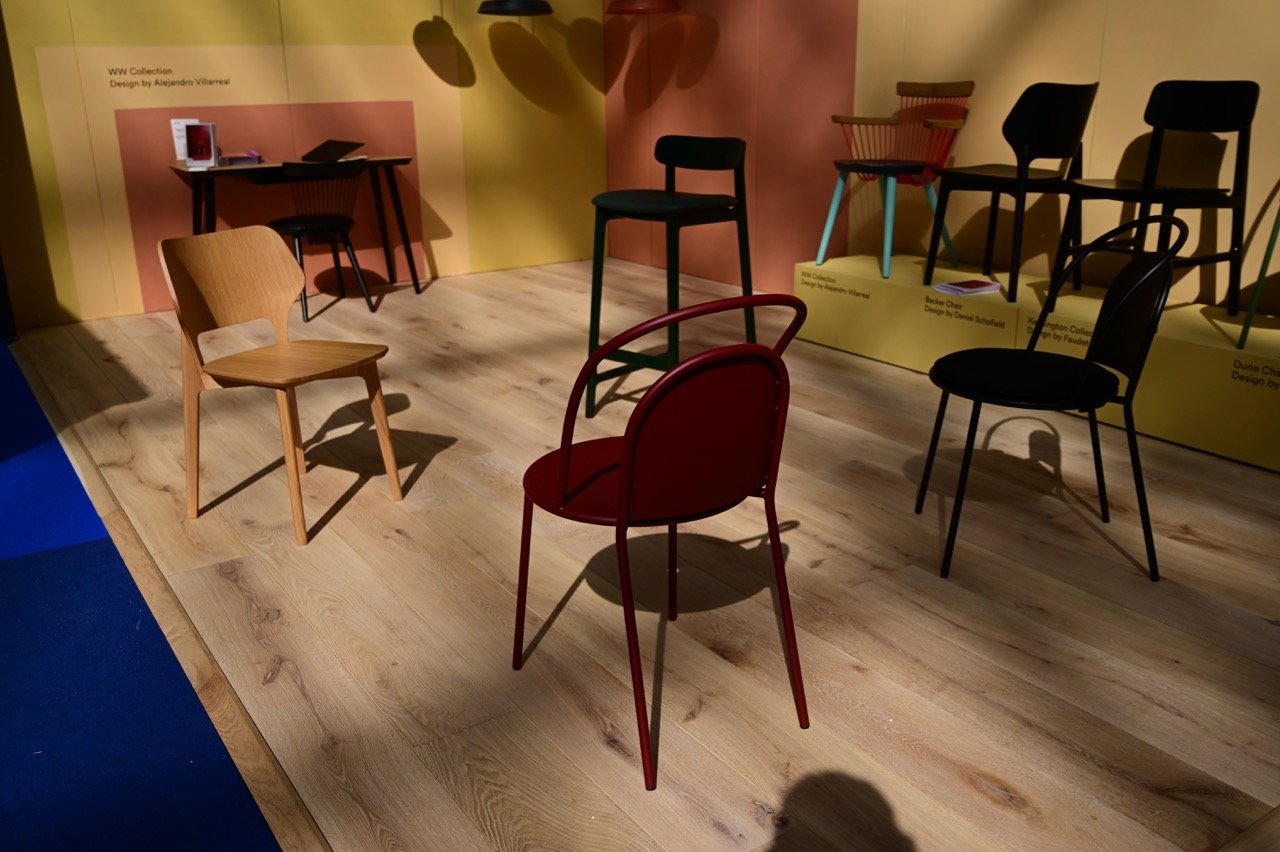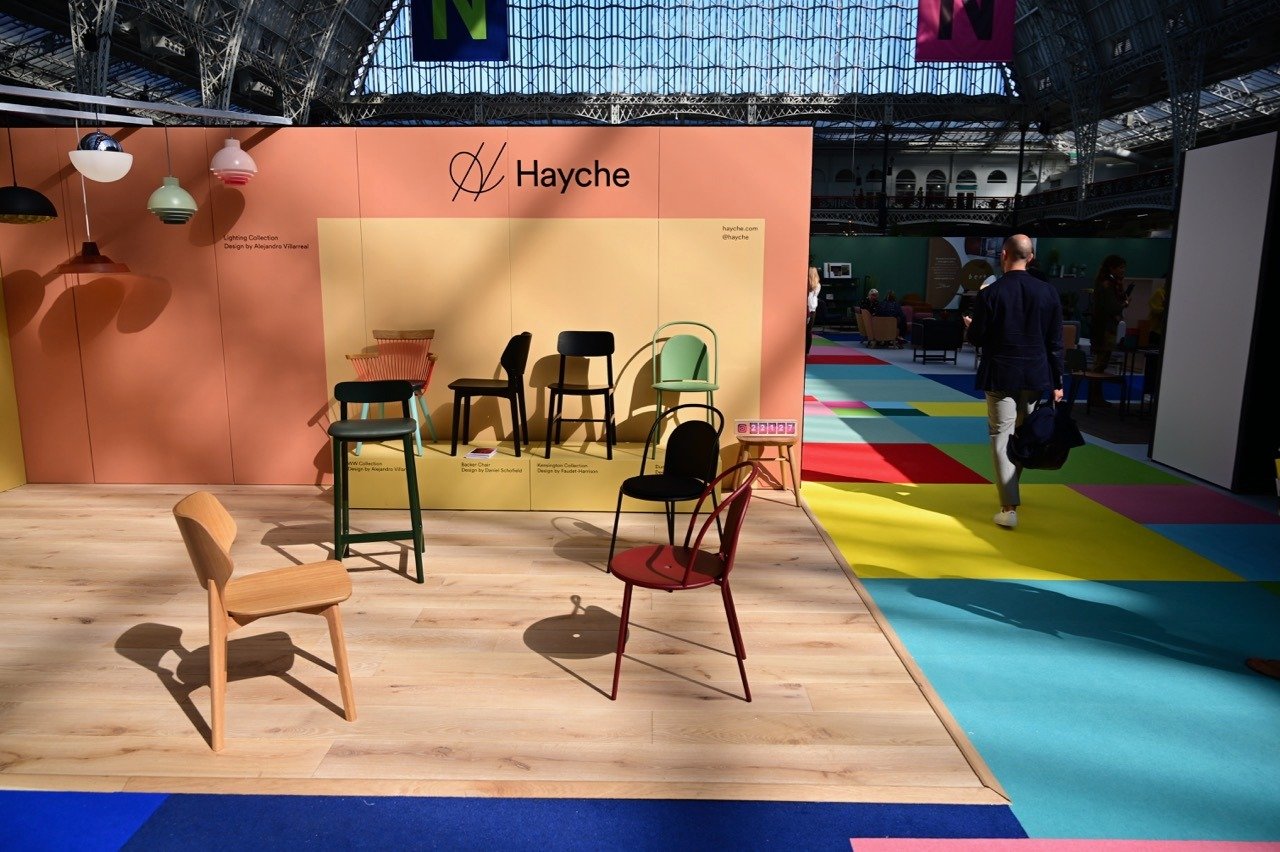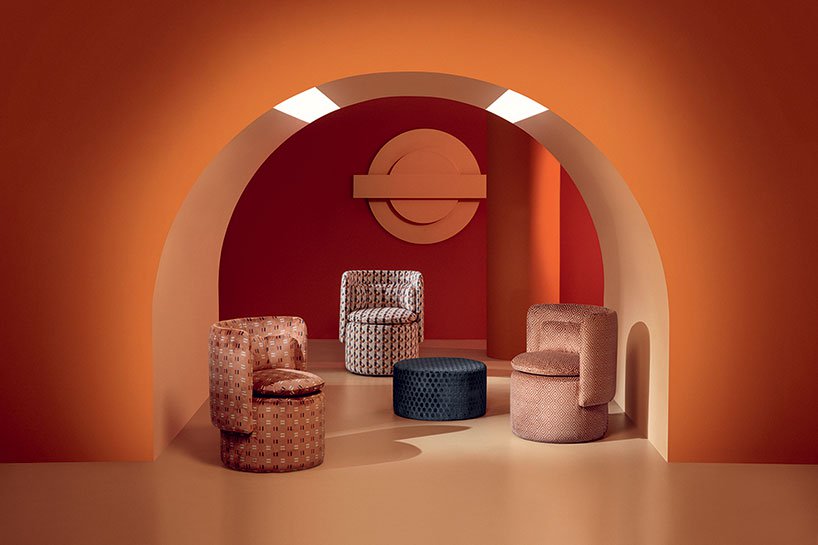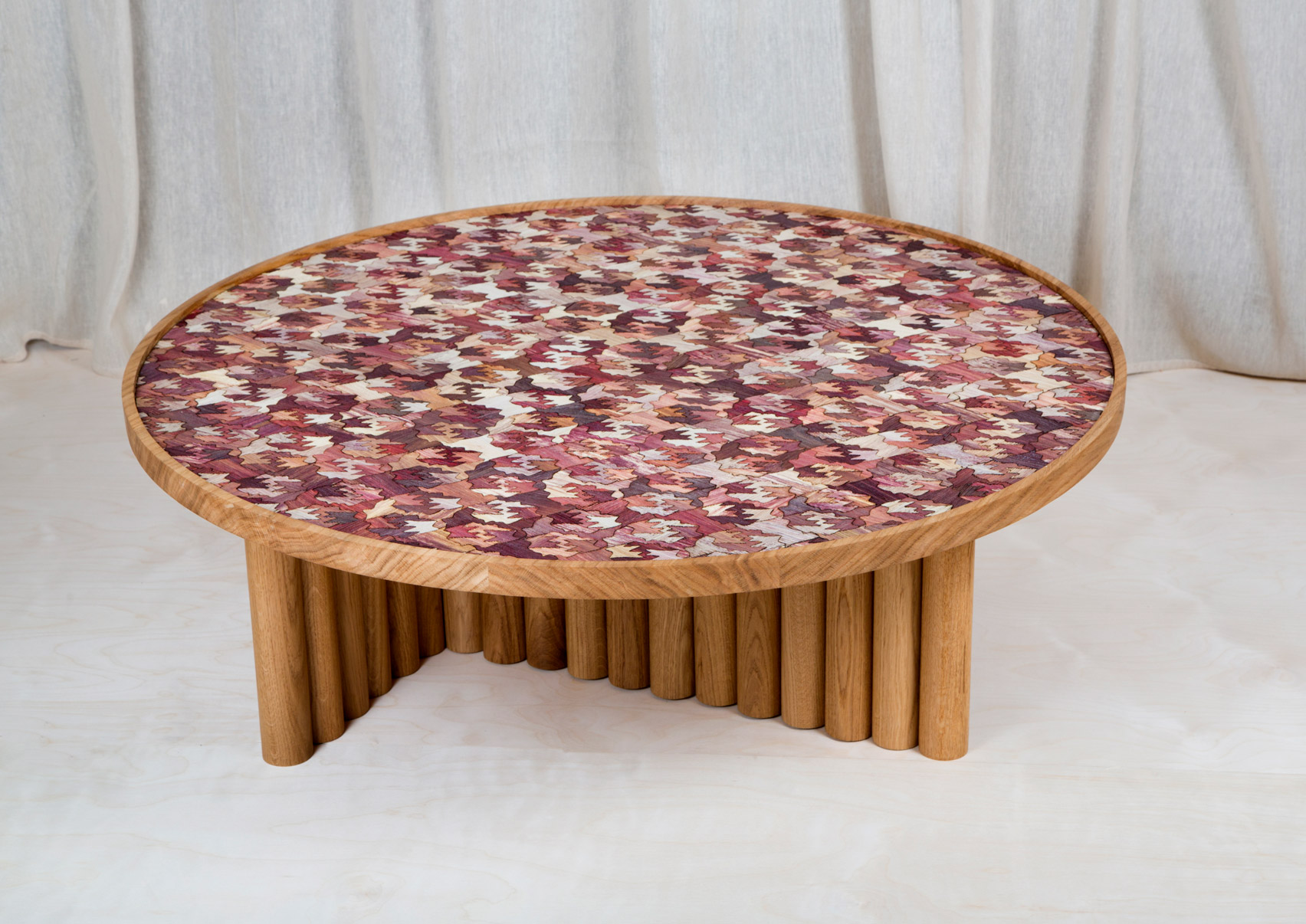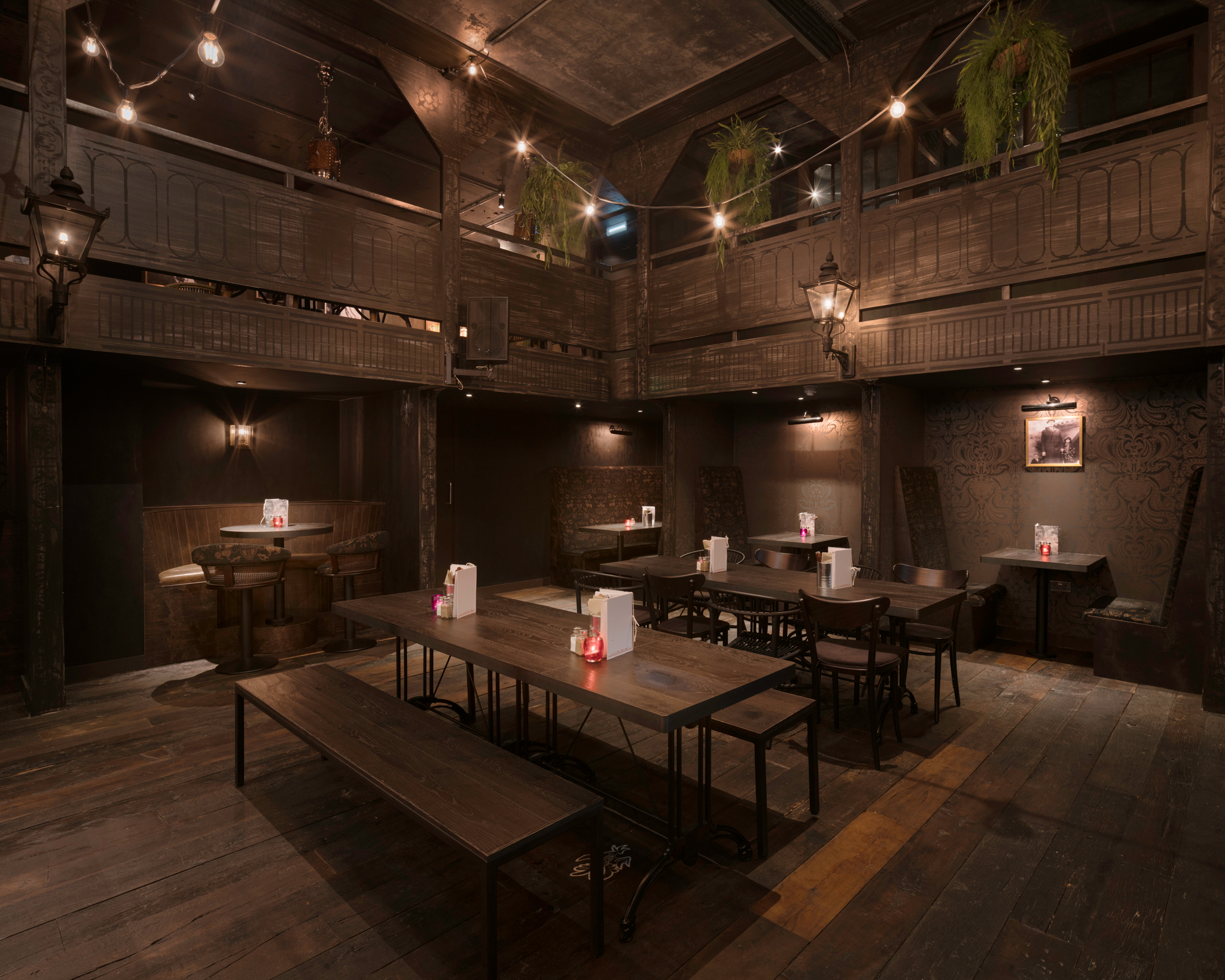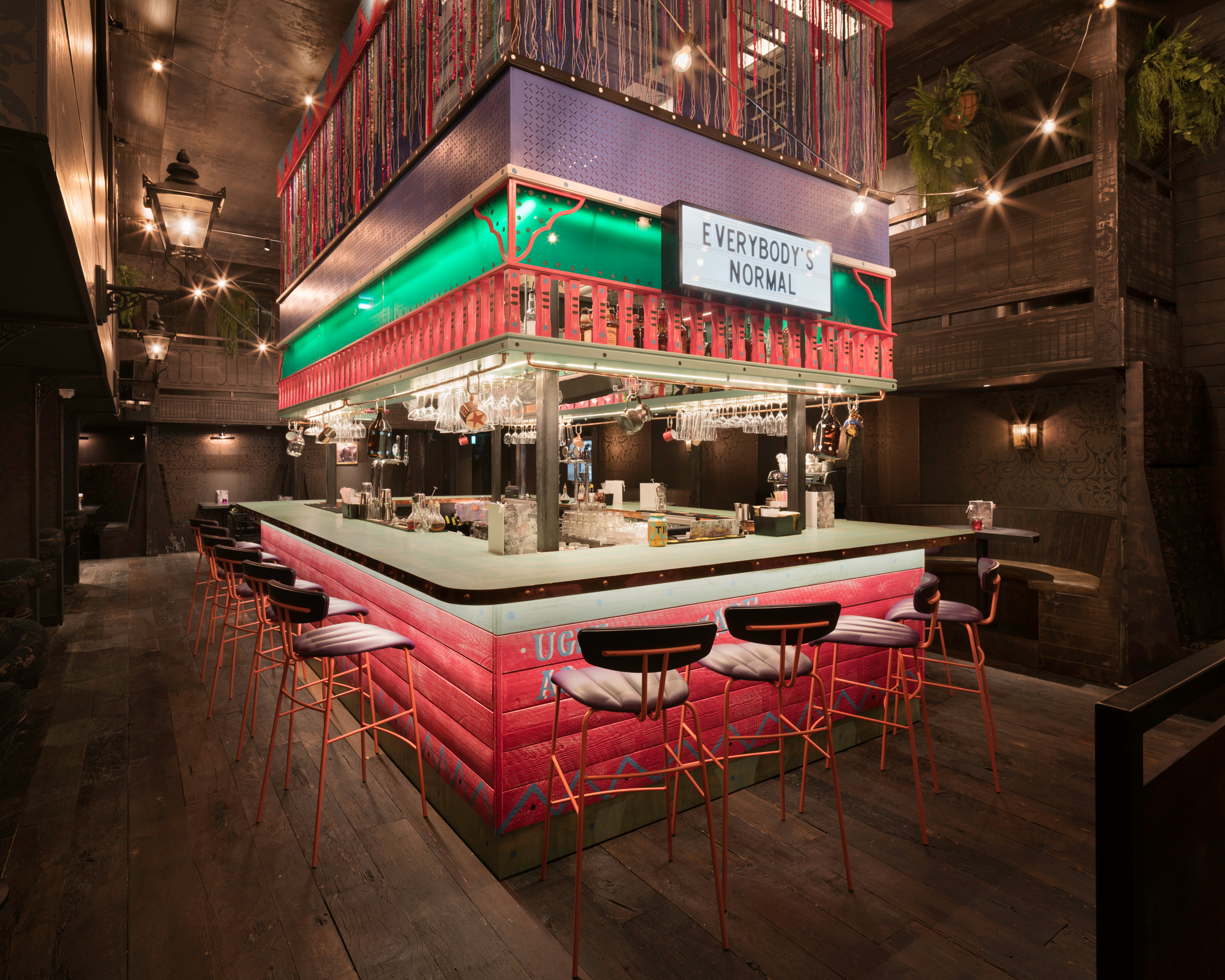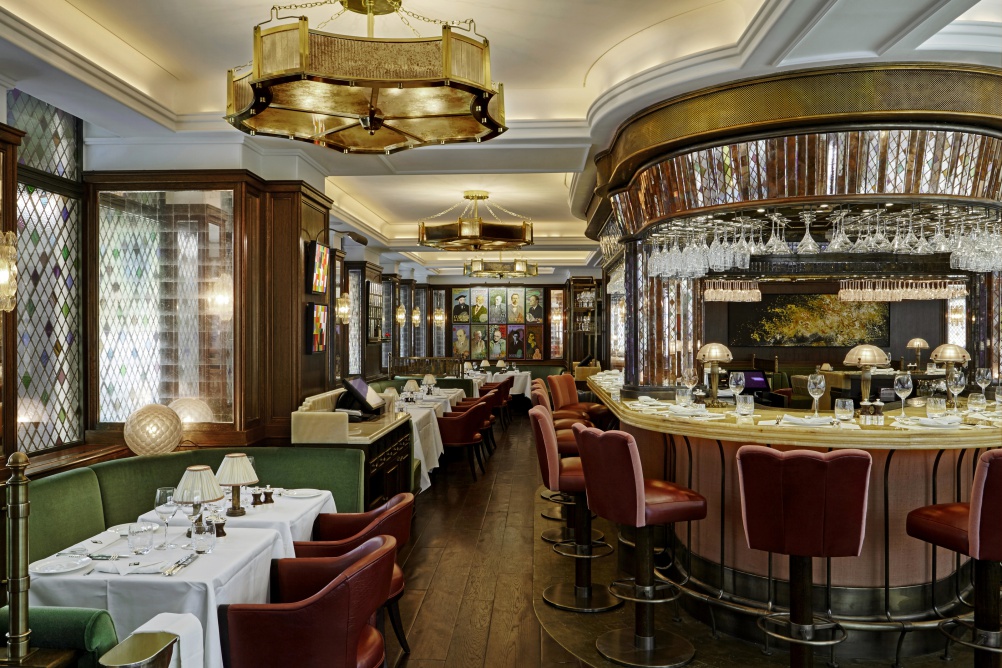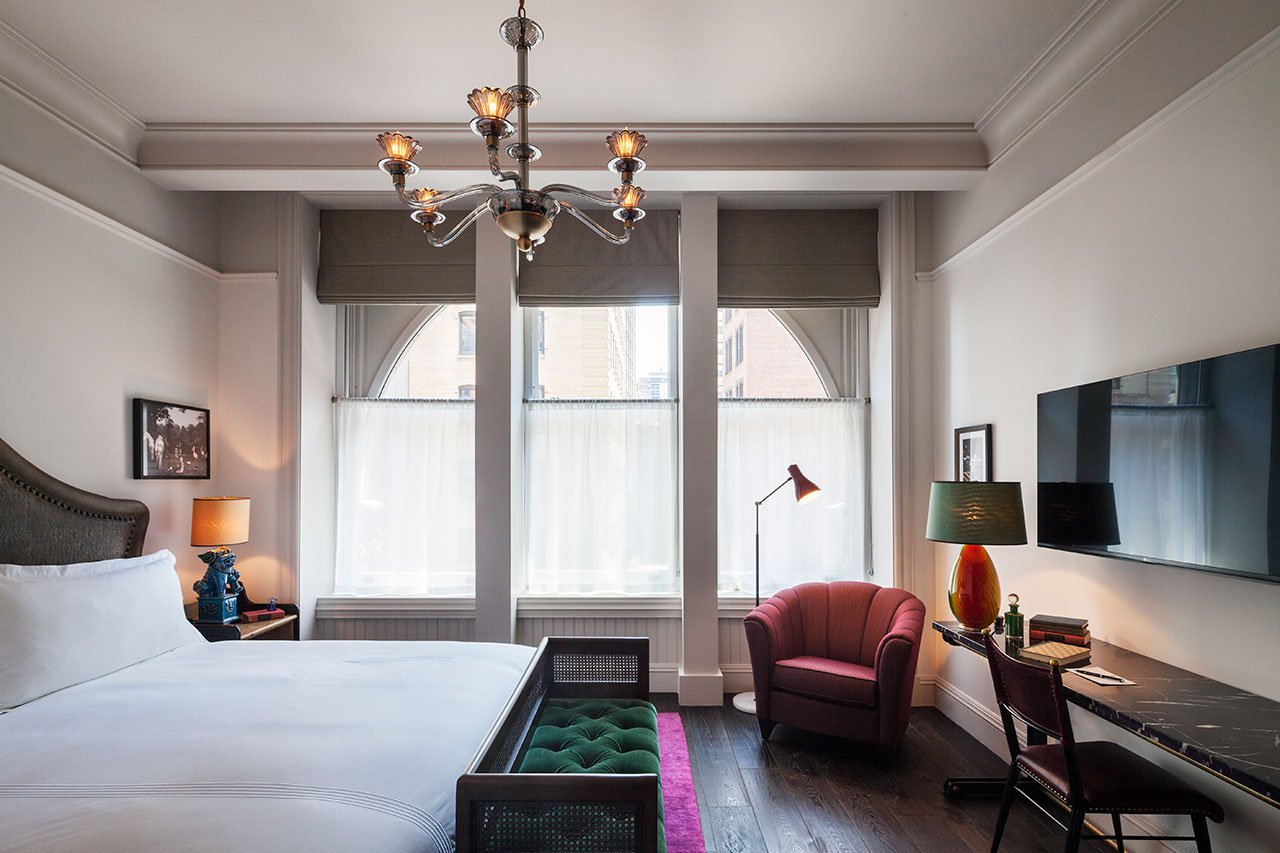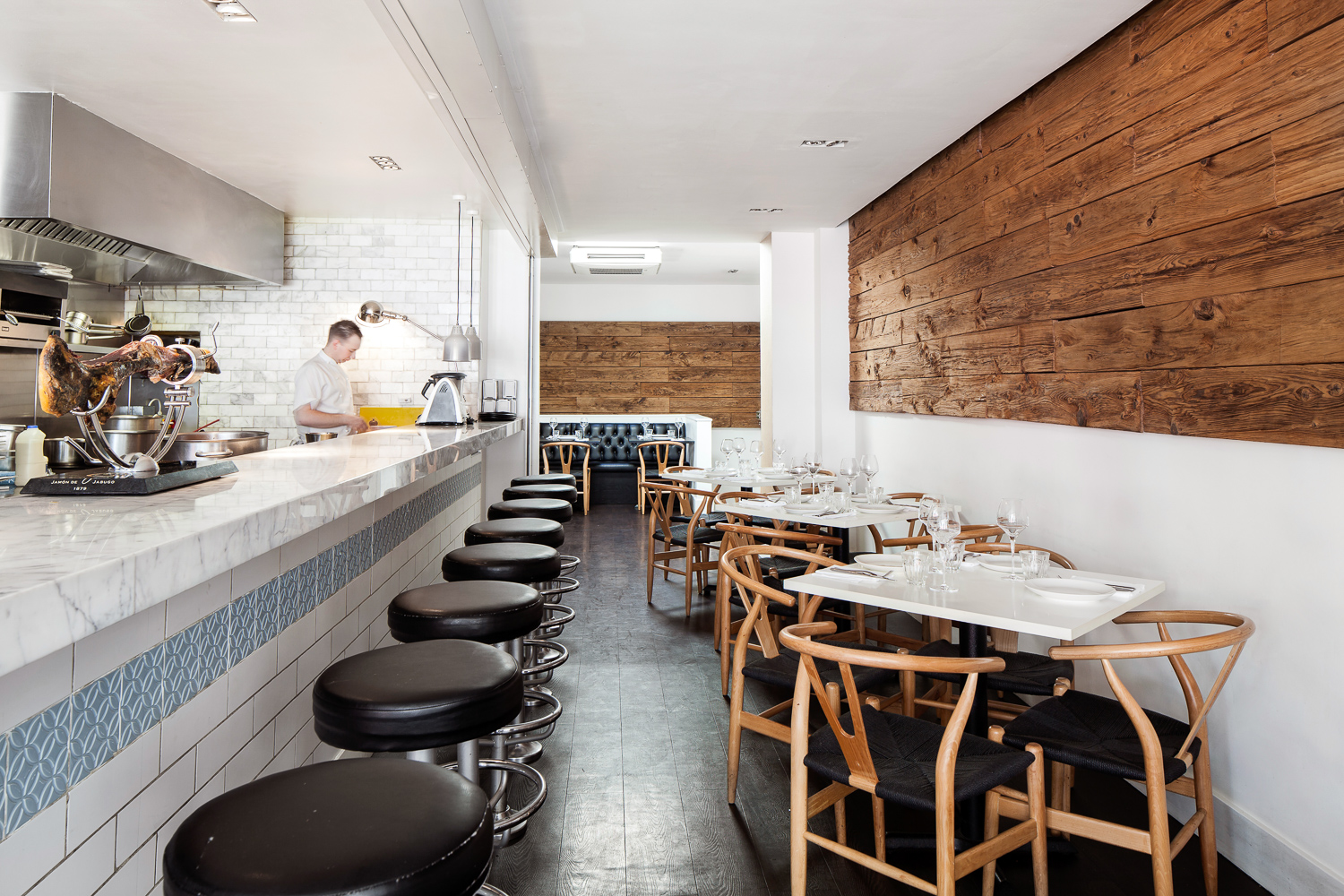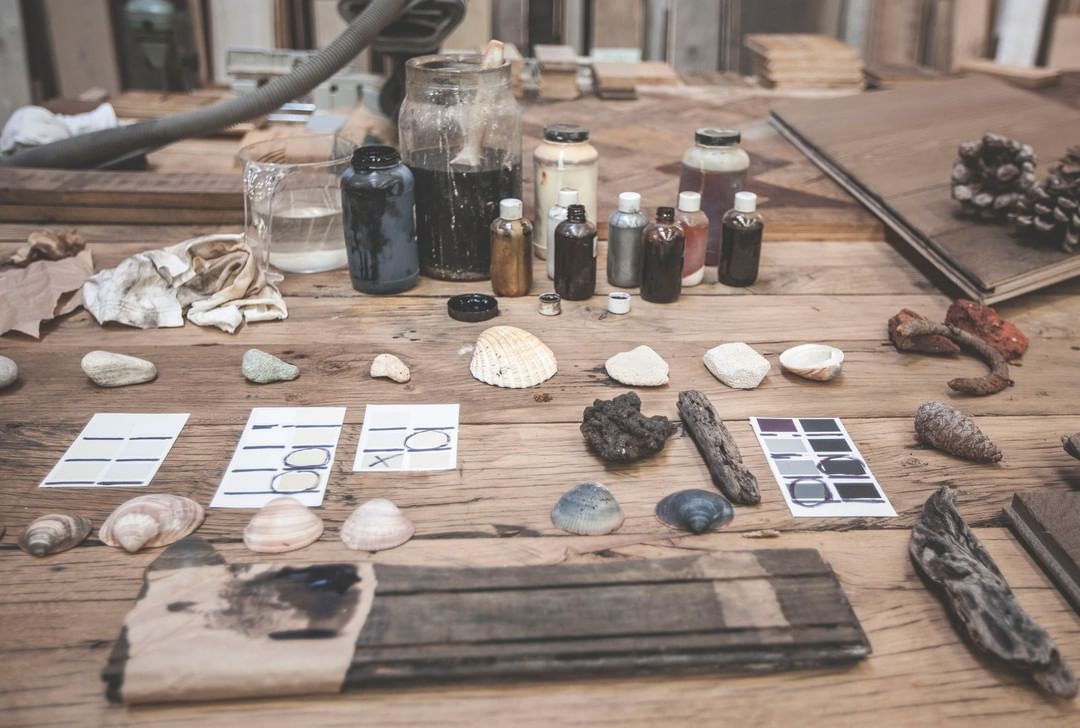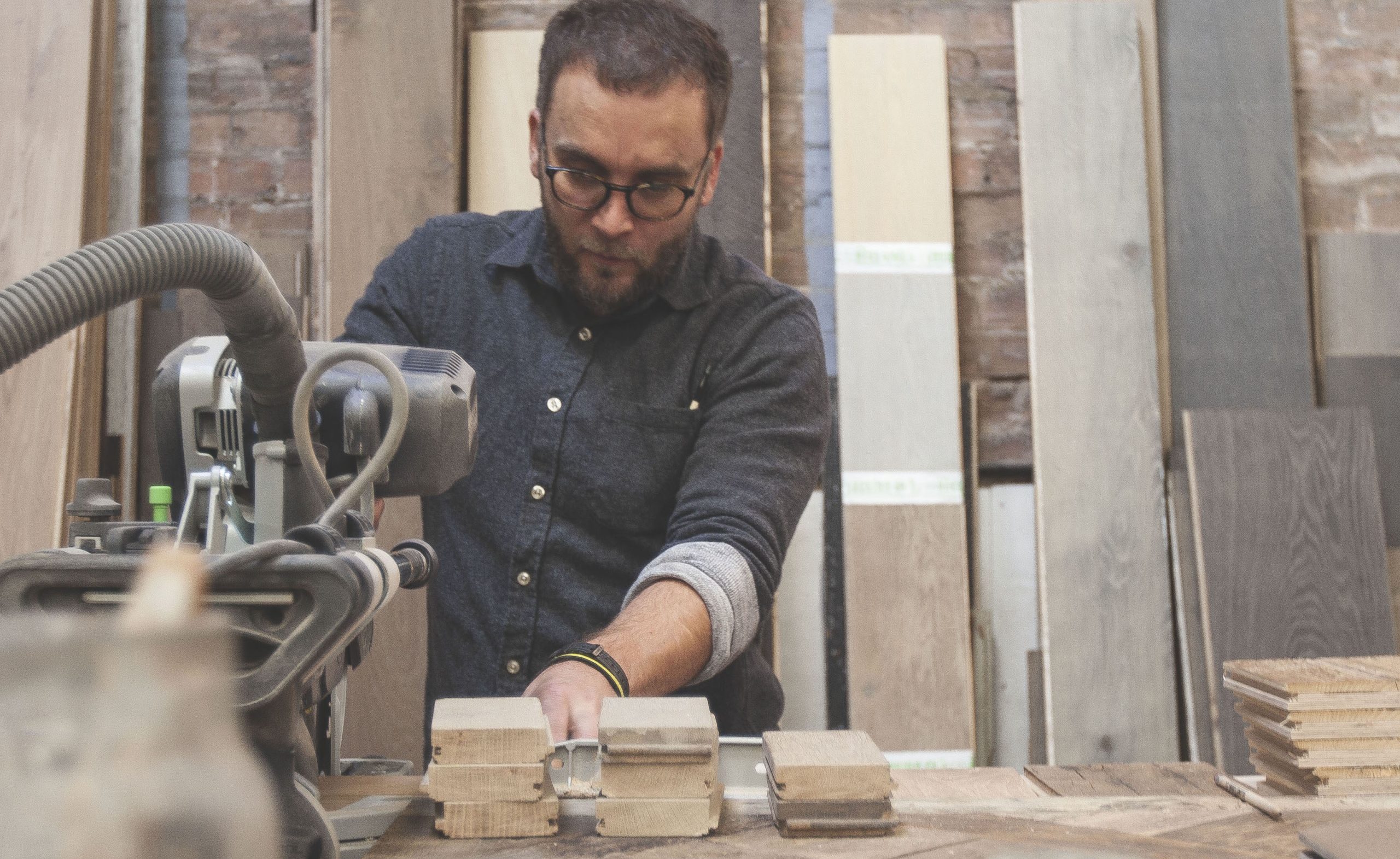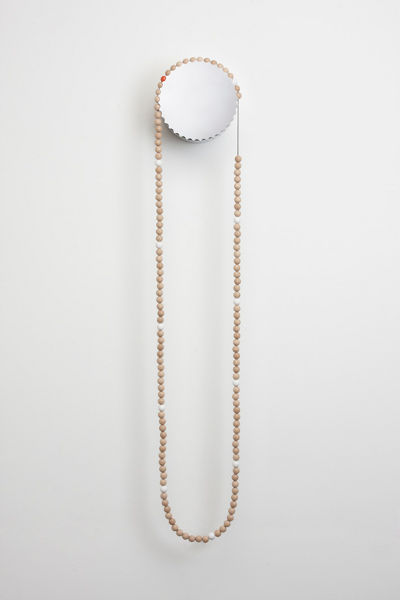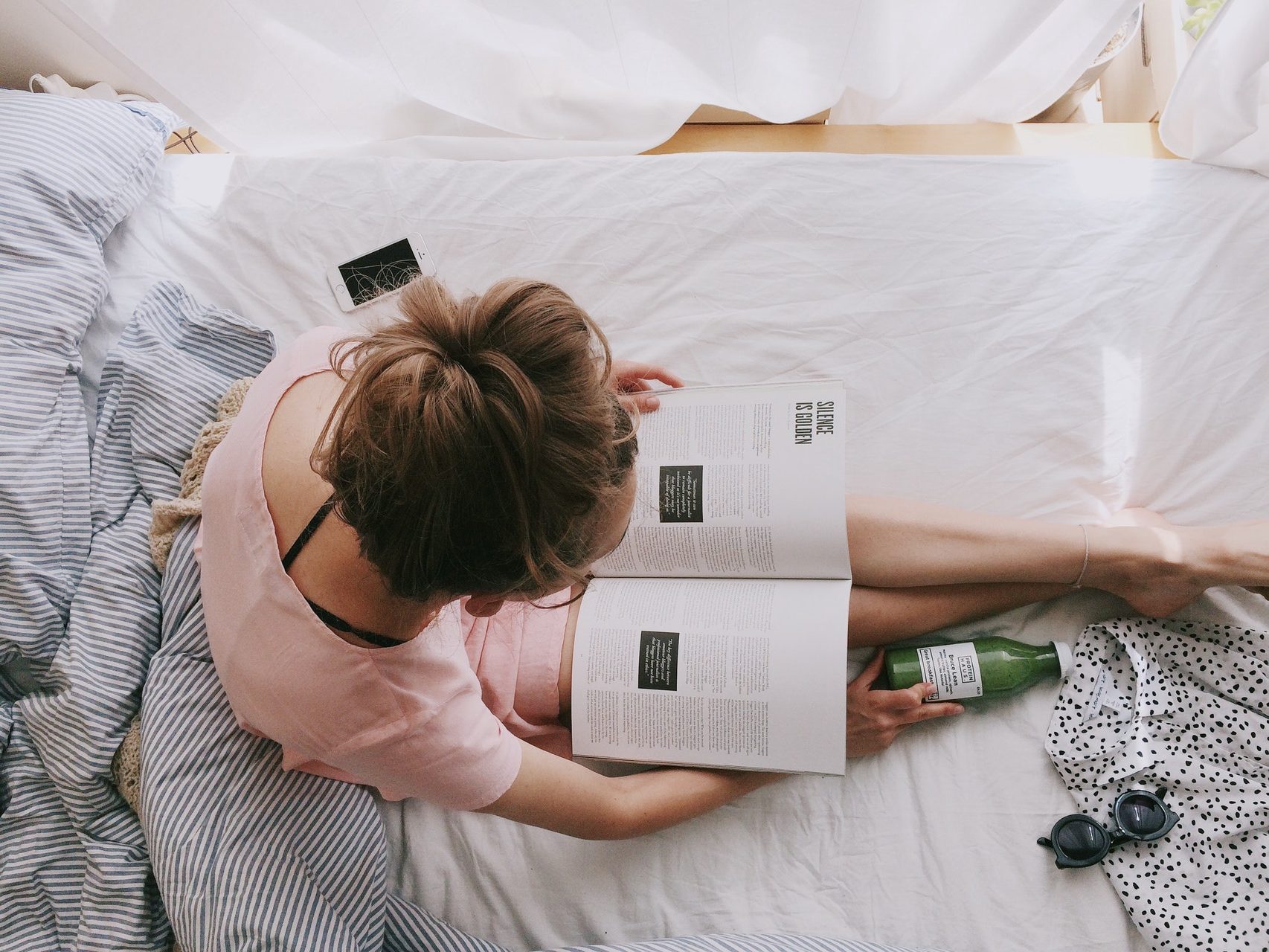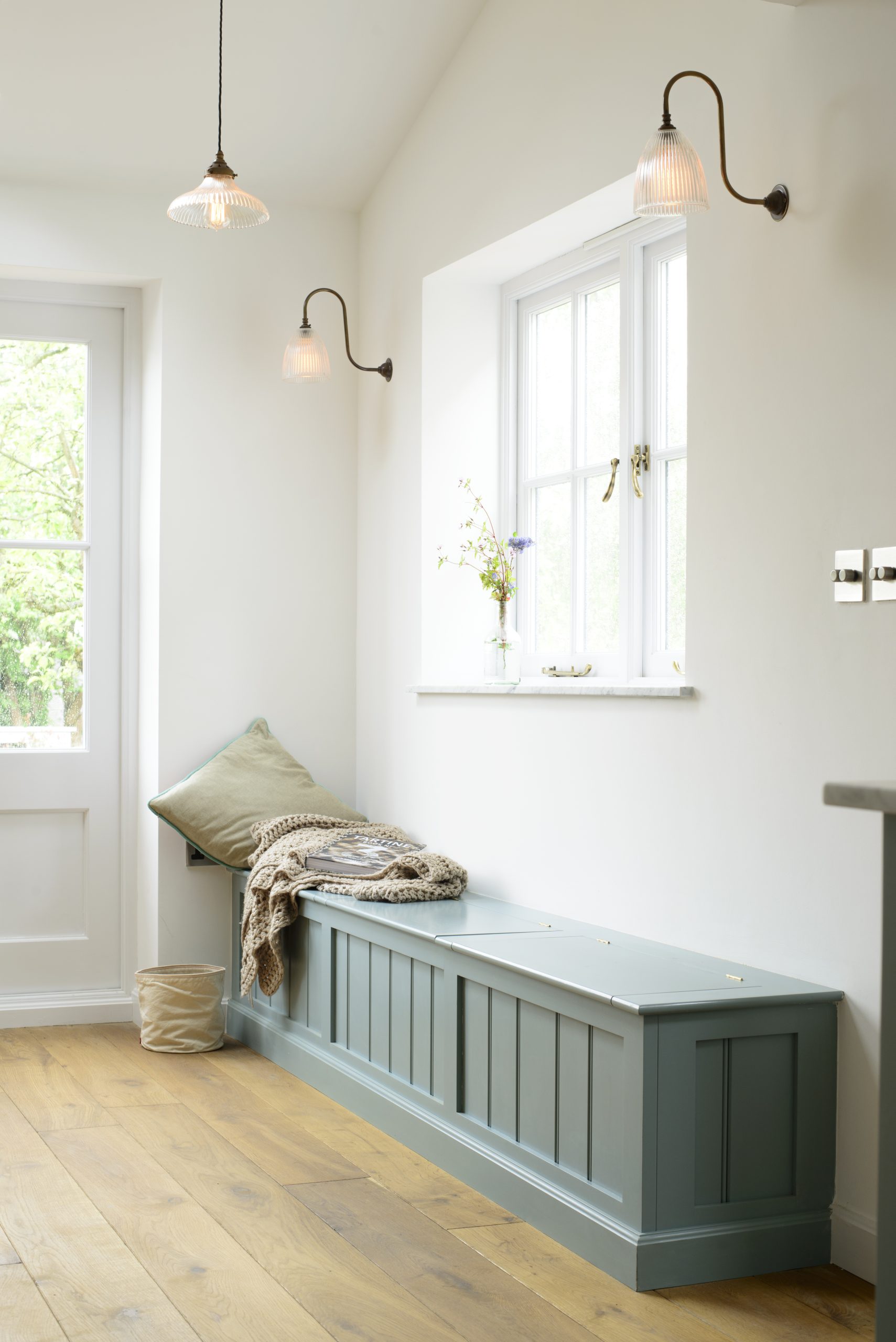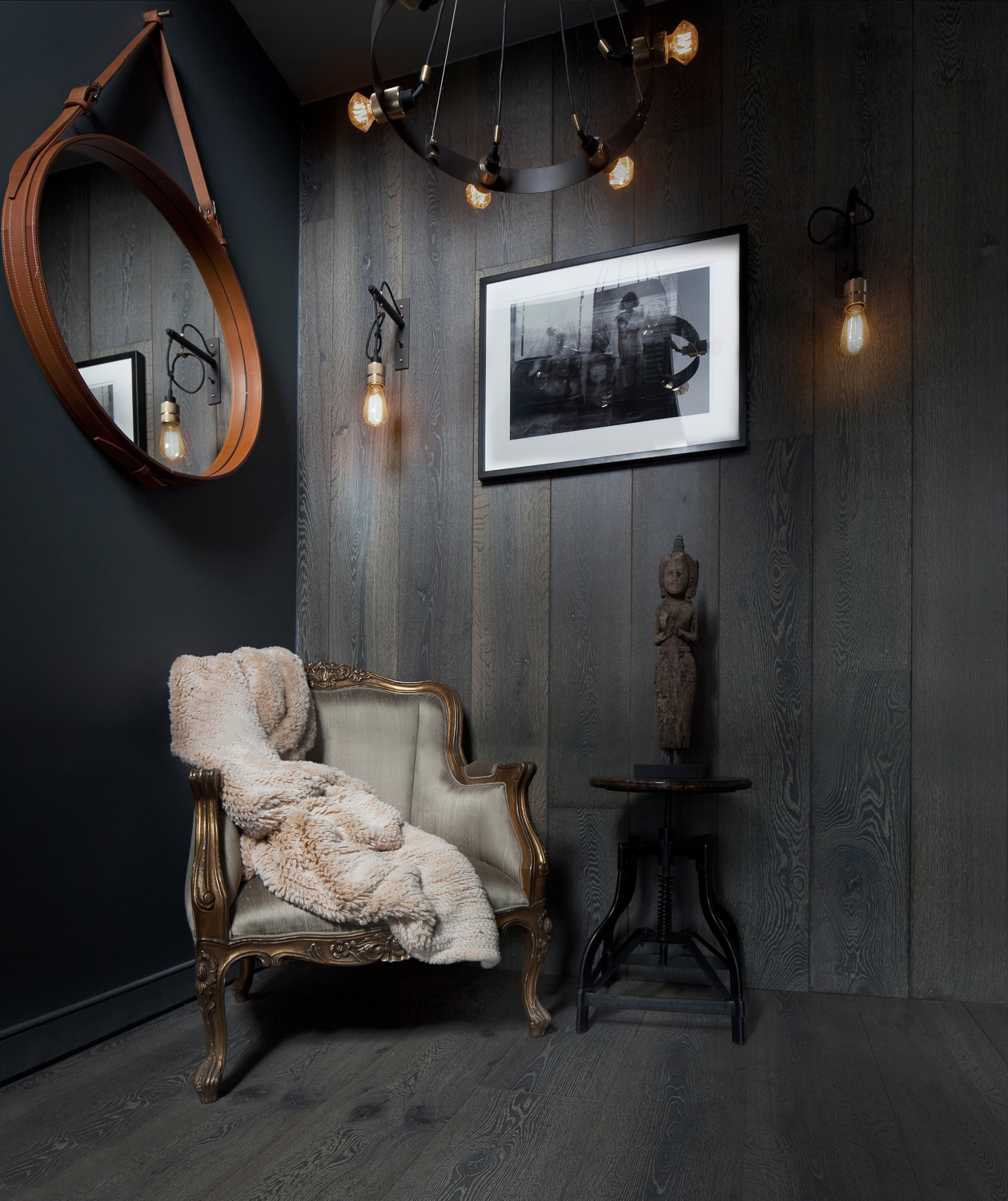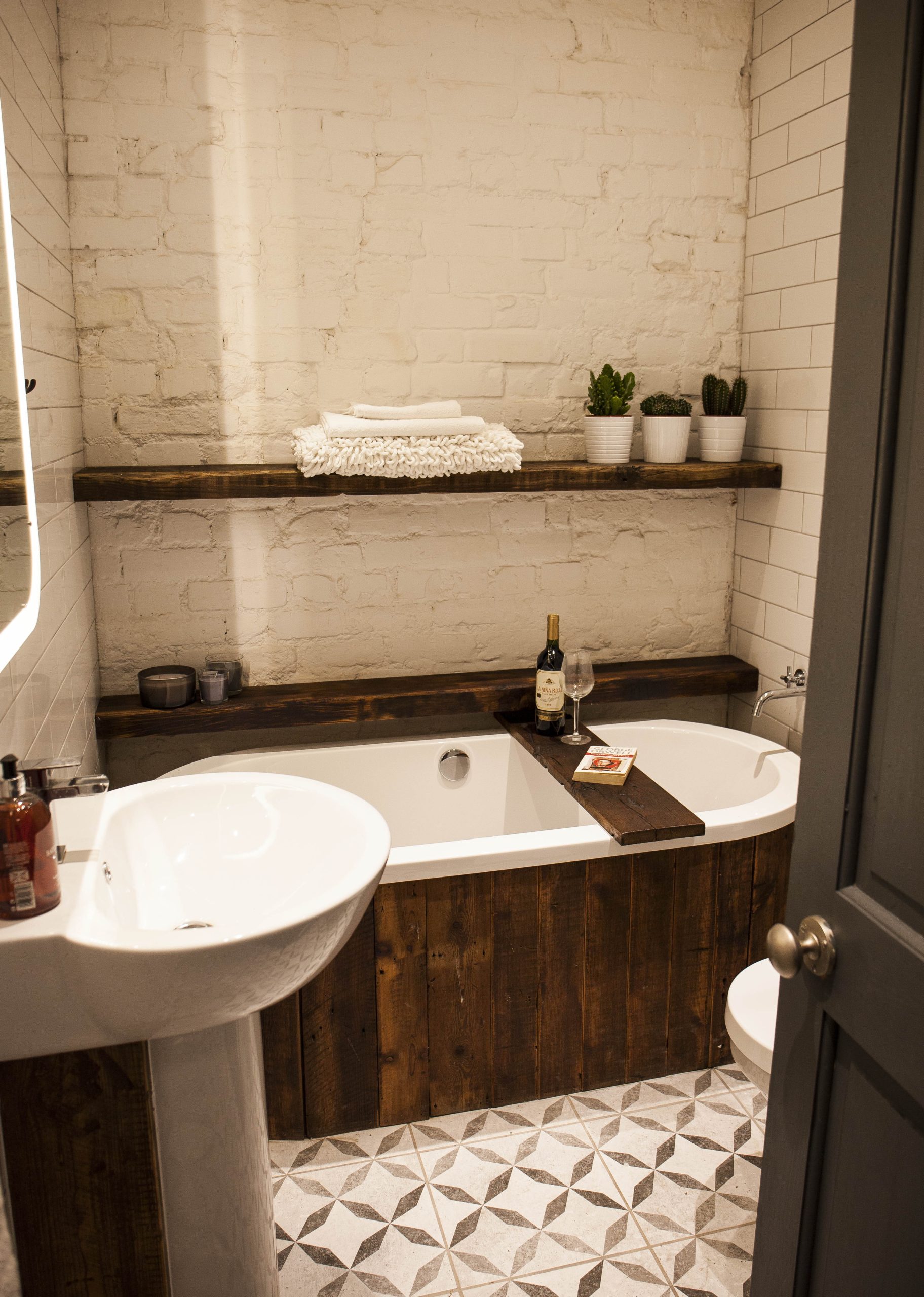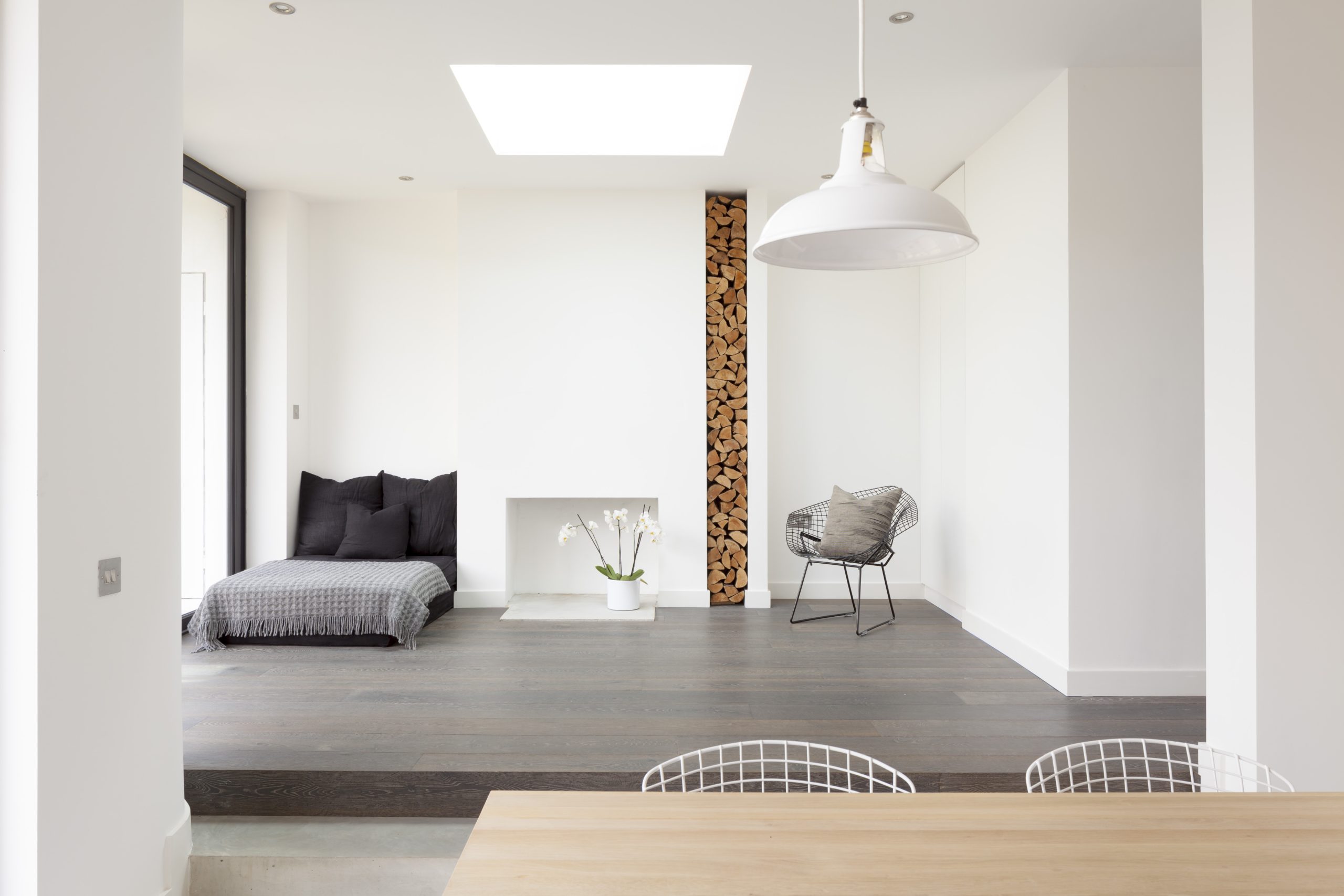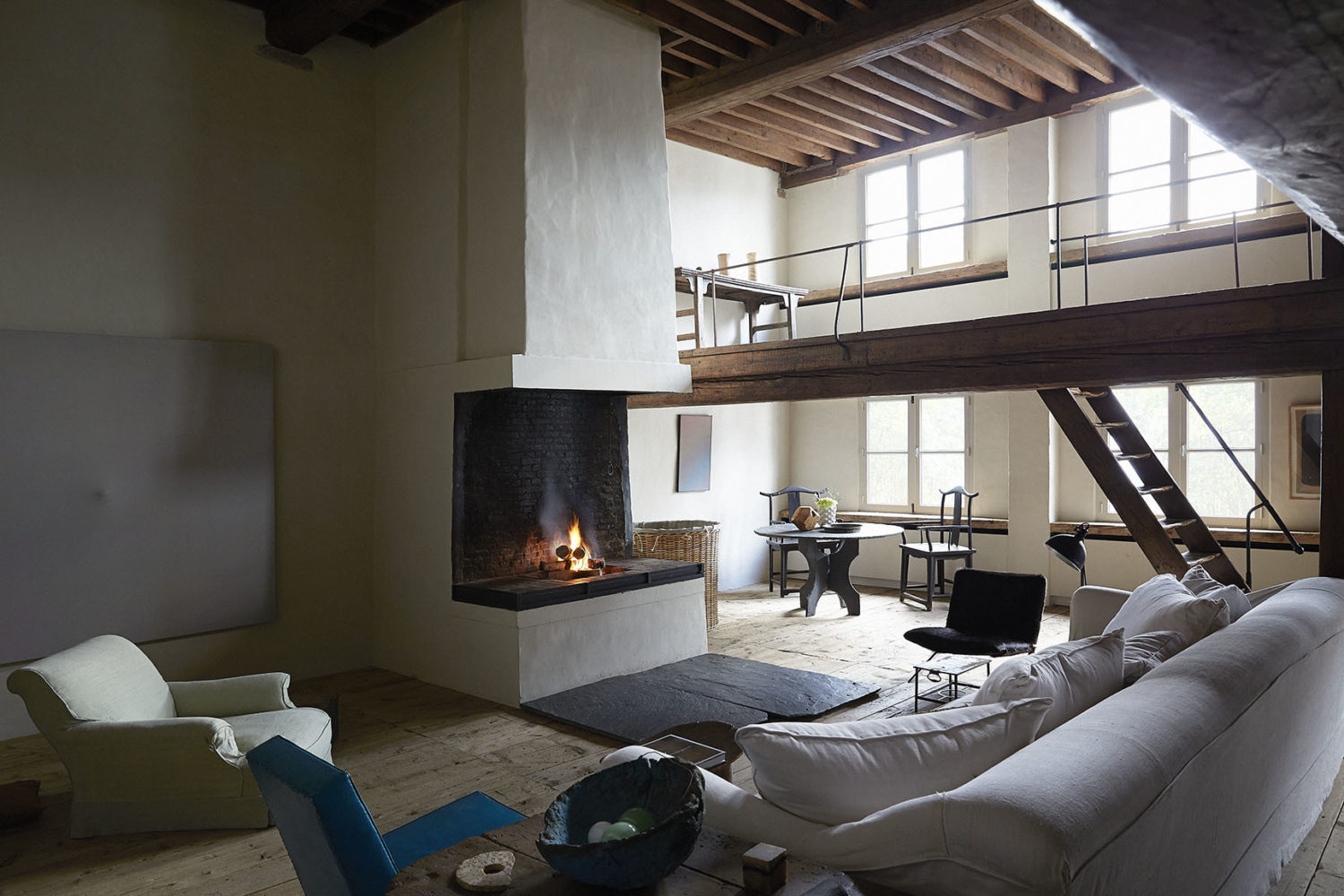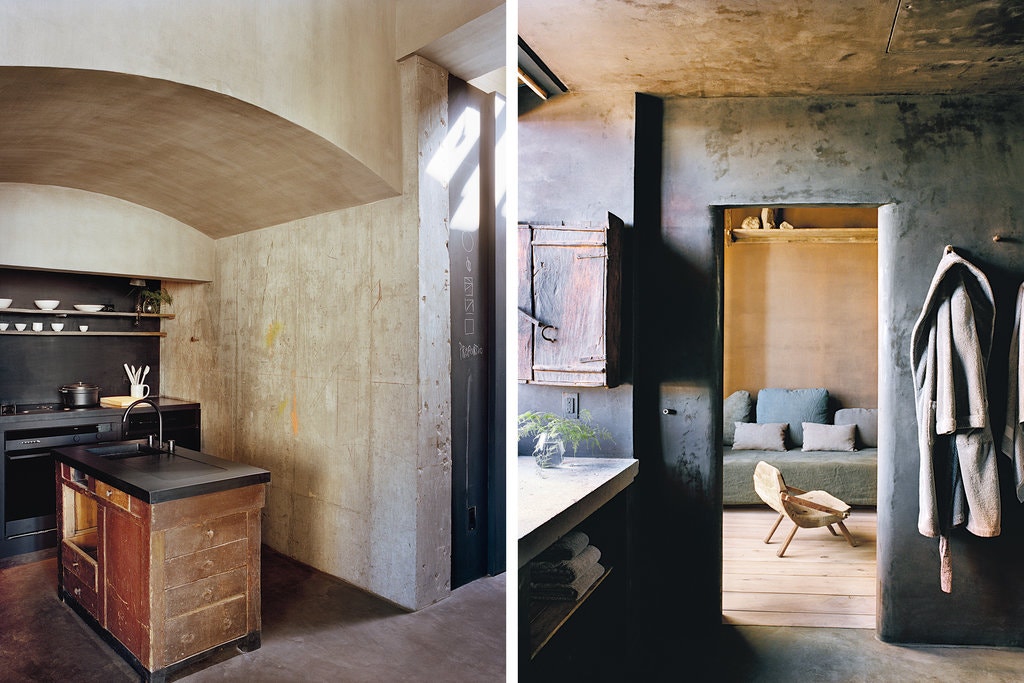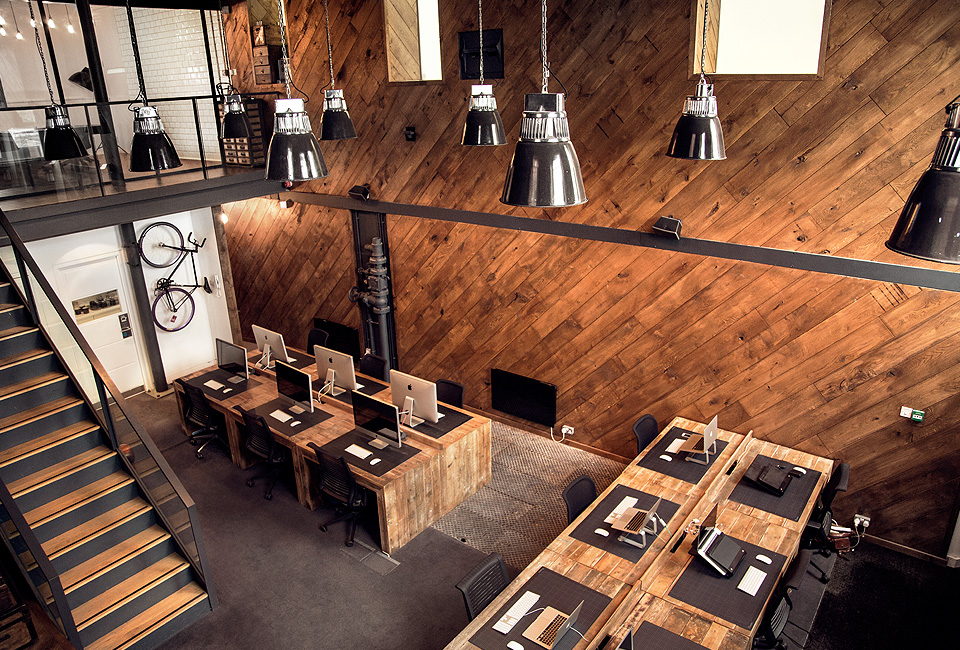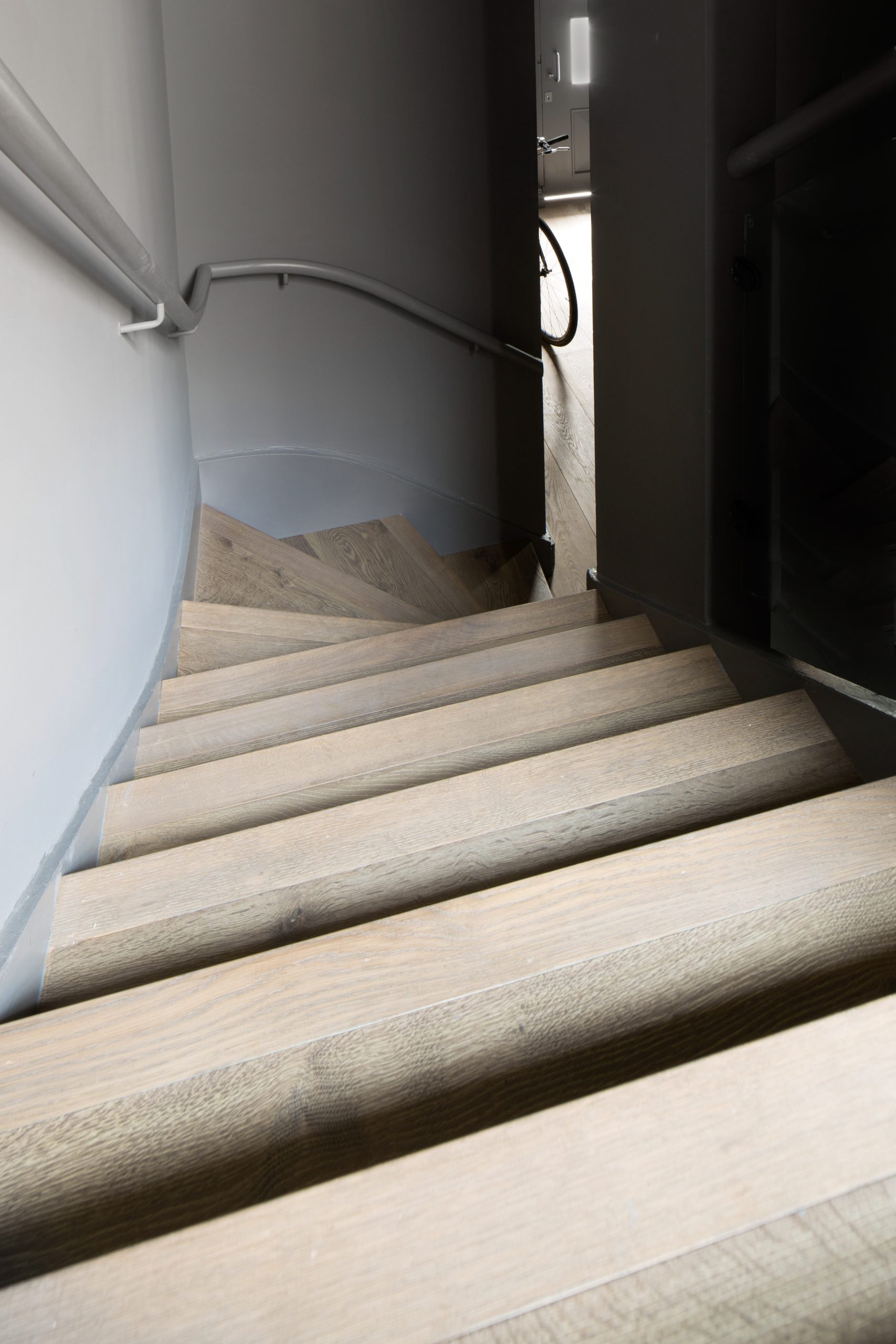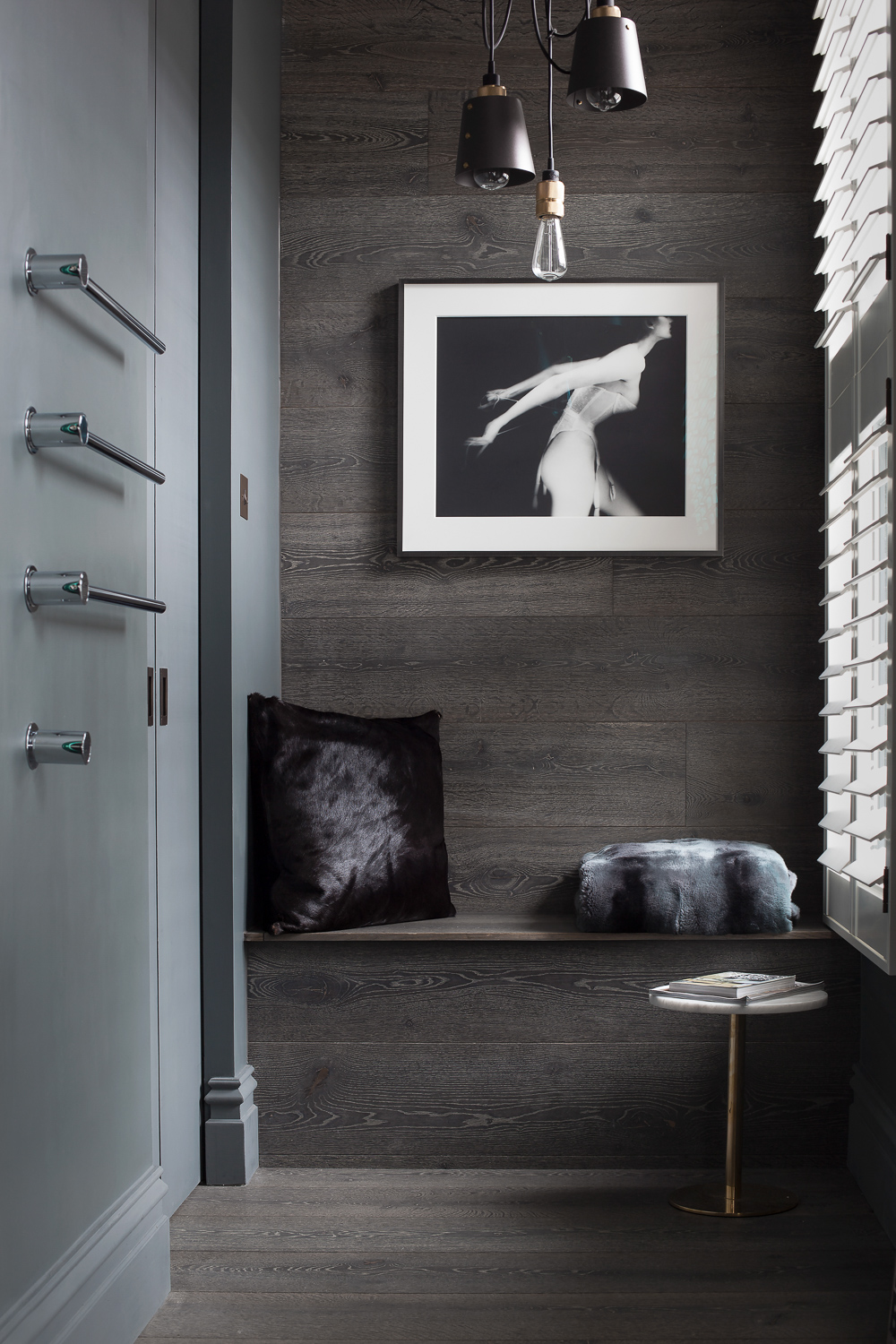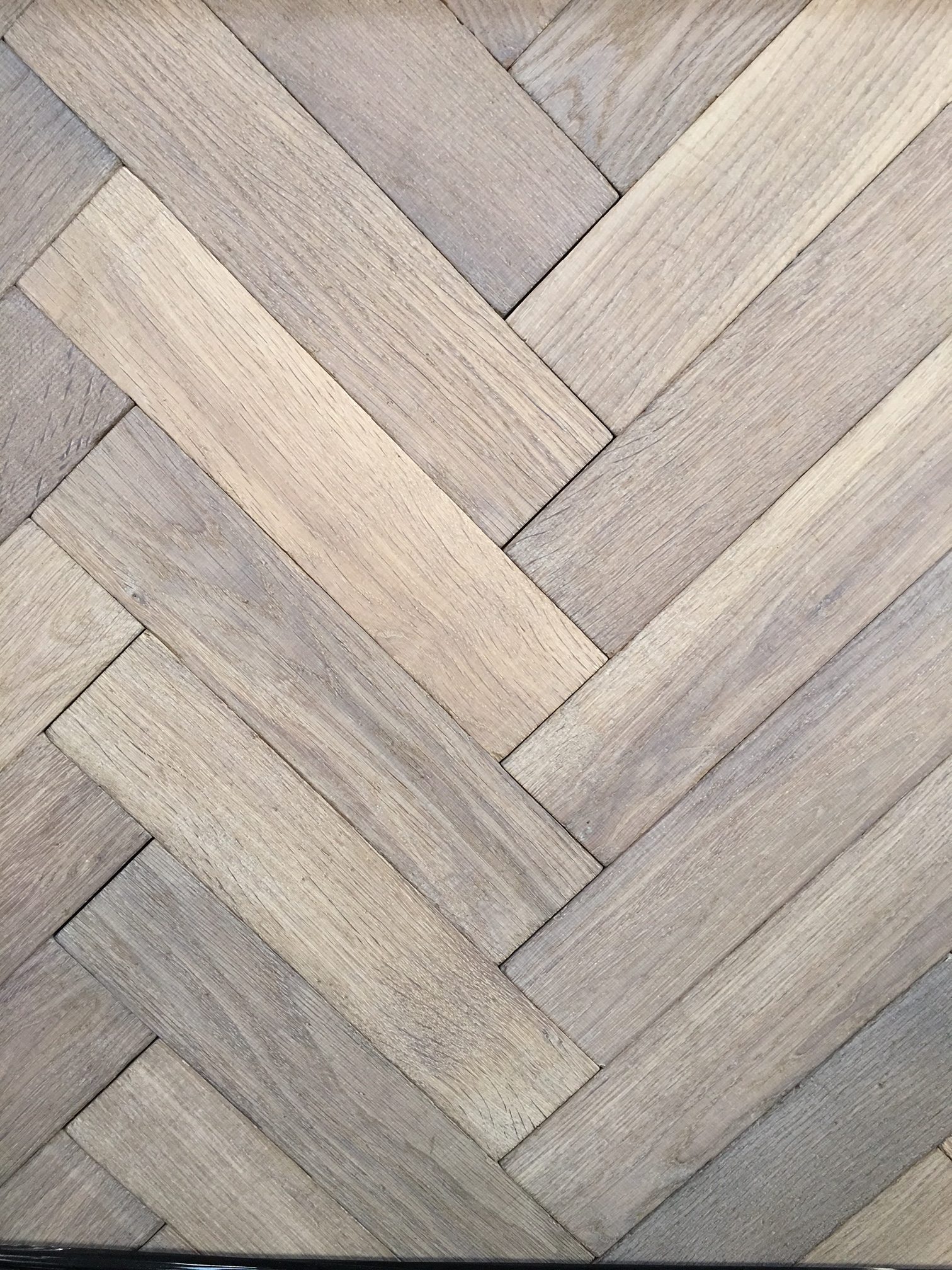
Known for signature sumptuous interiors and distinctive lifestyle products, Kelly Wearstler’s vibrant work may be found in grand residences and destination-in-their-own-right luxury hotels, from Beverly Hills to the Caribbean.
Inspired by travel, nature, architecture, fashion, literature and art; design is largely intuitive for Wearstler — and her multi-faceted style is governed by a bold and truly rich sense of materiality, intense colour and form, as well as a strong narrative approach.
This is evident in her most notable projects: BG Restaurant at Bergdorf Goodman, the San Francisco Proper Hotel, the Four Seasons Anguilla, and an array of private residences around the world — as well as luxury collections of bespoke furniture and fabrics, lighting, wall coverings, decorative home accessories and objets d’art sold in her West Hollywood store.
Sensitively fusing the natural with the refined, blending sophistication and spirited spontaneity, drama and warmth, and incorporating diverse periods of design elements, she has revolutionised the look, feel and meaning of contemporary American design, repeatedly earning her a spot on Architectural Digest’s prestigious AD100 list, Elle Décor’s A-List of the world’s best interior designers, Wallpaper’s Top 20 Designers and TIME Style & Design’s Design 100 group of global creatives.
Based in Los Angeles, California, Kelly Wearstler is a creator of unique experiences and compelling stories.
Her philosophy being “love colour, take risks, stay curious”, she’s attracted to designs that are visually striking and boldly distinctive.
Maintaining balance is crucial for Wearstler’s design empire, and to each project, she brings a touch of the unexpected and unconventional.
“My job is to be a good listener and run the clients’ vision through my filter. I start by asking them what story they want to tell, how they want to feel. It’s about evoking a mood, telling a story.
Also, scale is imperative. There has to be a hierarchy within a space. Too many starlets in one room create needless drama,” Wearstler says.
“To achieve balance, there must be a thoughtful mixology of texture, history, pattern and colour.
Quieter details are necessary to ground bigger voices and allow statement pieces to shine.”
She views mother nature as the best designer, often injecting elements such as stone, luxe wood and patina metal to conjure up a one-of-a-kind interior. This has made her the go-to design diva for the Proper Hospitality brand.
The newly designed Santa Monica Proper Hotel successfully optimises the use of earthy tones, natural material and organic textures inspired by the local coastline.
Encompassing 271 stylish luxury rooms, a signature restaurant, a sweeping rooftop pool deck with a bar, cabanas and a spa terrace, the newly-built contemporary panache of sleek minimalism, characterised by undulating glass and concrete facades takes residence in a historic six-storey Spanish Colonial Revival building designed by Arthur E. Harvey in 1928.
The layer upon layer of soft palette of sandy hues, light hardwood flooring, organic textiles and indoor palm trees conjure the sensation of a restful day at the beach, enhanced by floor-to-ceiling windows, balconies and garden terraces.
An eclectically curated selection of dashing Art Deco and mid-century furniture, as well as contemporary and vintage artwork by Los Angeles artisans complements the luxurious and striking architectural features, including tile-clad structural columns, abstract, irregular parquetry, and transitional full-height archways of timber.
Conclusion
As one of the presiding grande dames of West Coast interior design, Kelly Wearstler is celebrated for luxurious interiors that capture the swankiness of old-world Hollywood with a modern pop sensibility. Her ornate designs of residences and luxury hotels showcase her intimate love for bold spaces, unique shapes, abundance of pattern play and rich colours juxtaposed with lustrous surfaces.
This has also translated to her eponymous collection of furniture, lighting, decorative accessories and more. The glam design queen continues to push boundaries with her signature glamour-meets-eclectic aesthetic — certainly a true creator of experiences and a multi-hyphenated force to be reckoned with.
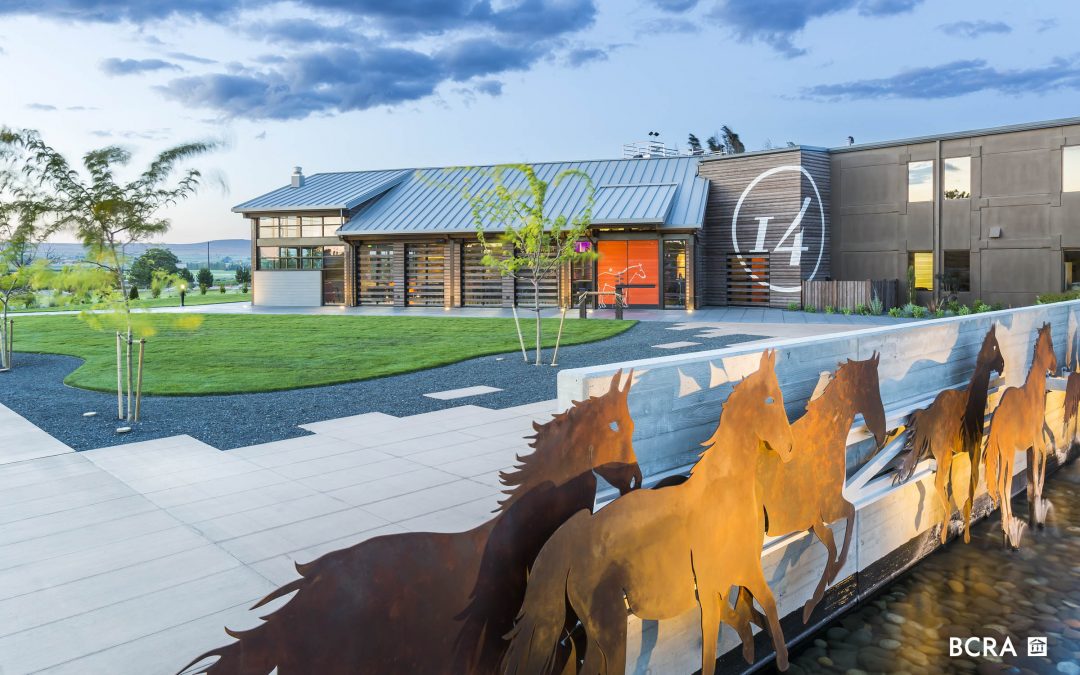
The workplace is constantly changing to accommodate different people’s work preference, roles, functions and behaviours.
As a result, many companies are working with experiential graphic designers who understand how people experience and move through space, and how visual storytelling integrates with the overall architectural and interior design layout.
Through experiential graphic design (EGD), we can enhance the architectural setting and make use of visual communication to improve human creativity, mental focus and well-being — eventually creating a true sense of place for employees.
Experiential graphic design employs and reinforces the company values and culture through the use of imagery, colour, typography, pictogram and illustration.
Human-centric design, branding, and interactivity are all vital pieces of the EGD approach that focuses on entirely distinctive experiences for those that use the space.
Nature’s inspiration evoke positive experiences
Experiential graphic design is a key foundation that plays a critical role in how we interact with our workplace.
It can be used to evoke the desired responses within the organisation and enrich the daily lives of those using the space — employees and clients alike.
For example, biophilic design suggests that human connection to nature can improve physical and mental well-being. Such concepts have helped draw attention to a more human-centric design perspective; and while it would be a great idea to place plants and other natural features in an office space, in some cases, such nature sabbaticals are not always an option.
Graphic treatments that take inspiration from nature — visuals of lush forest to a relaxing beach, or any other intriguing landscape you can imagine — can also function as an effective solution within the workplace to achieve similar results: human wellness and betterment.
Harnessing productivity through movement
We spend the greater portion of our workday sitting down, tapping on one device to the next.
To shake things up, people-focused experiential graphic design can be the inspiration needed to intersperse movement and exercises throughout the day in order to boost employee energy, engagement and efficiency
The use of a simple two-dimensional message or making responsive digital stairway features more appealing can subconsciously push employees to take the stairs more. The body is trained to adapt, so freedom of movement has an influence on what we do daily, and can positively trigger the part of our brain responsible for thought, alertness and creativity.
Creating a unique connection
Innovative, well-designed, creative workspaces are increasingly becoming a necessity, especially in creating unique connections.
Strategic experiential graphic design elements have a vital part to positively connect people to their environment and shape an organisation’s desired culture.
When employees feel connected, the benefits are huge. People are at their best when they are able to work in an office environment that enables them to express their individual identity while also connecting to a brand and its narrative.
Adding elements of surprise
With bold environmental graphics and signage, and unique decor, a whimsical space can inspire play and engagement.
For example, incorporating a secret door that leads to a casual speakeasy-themed study room or living-room-style meeting areas where employees can hold meetings.
This “hidden” room can be easily located via directional signage on the floor itself. The idea is simple: only when an organisation welcomes positive distraction from the everyday working experience and reinforces a culture of surprise and delight, employees begin to see work in a different light. New eyes and new perspectives contribute to company success and retention of new employees.
Eye-catching but simple designs
There are many ways in which a company can transform its workplace, and it’s easy to go over-the-top with experiential design.
But, when it comes to implementing this new and exciting concept that reimagines what good design looks like, sometimes less is more.
Once you’ve focused your message that strongly aligns with your brand’s narrative and decided on the content you wish to communicate and to whom, it’ll be much easier to identify a simple design strategy.
Conclusion
Building human-centric spaces goes beyond wellness programs, catered food & beverage, or integrating passing trends.
Companies are considering what it means to create an enriching and quality environment that offer deeper engagement with employees as soon as they physically step into the office.
Experiential graphic design is rapidly becoming more mainstream as brands and interior designers recognise the transformational power it possess in shaping how we think, feel and behave. When people have a quality experience that foster and support their needs, they are more attuned to the values and culture of the company.
Engaging and supportive spaces translates to innovative and creative workers, more customers, retention of new employees, as well as more social shares of well-designed spaces.
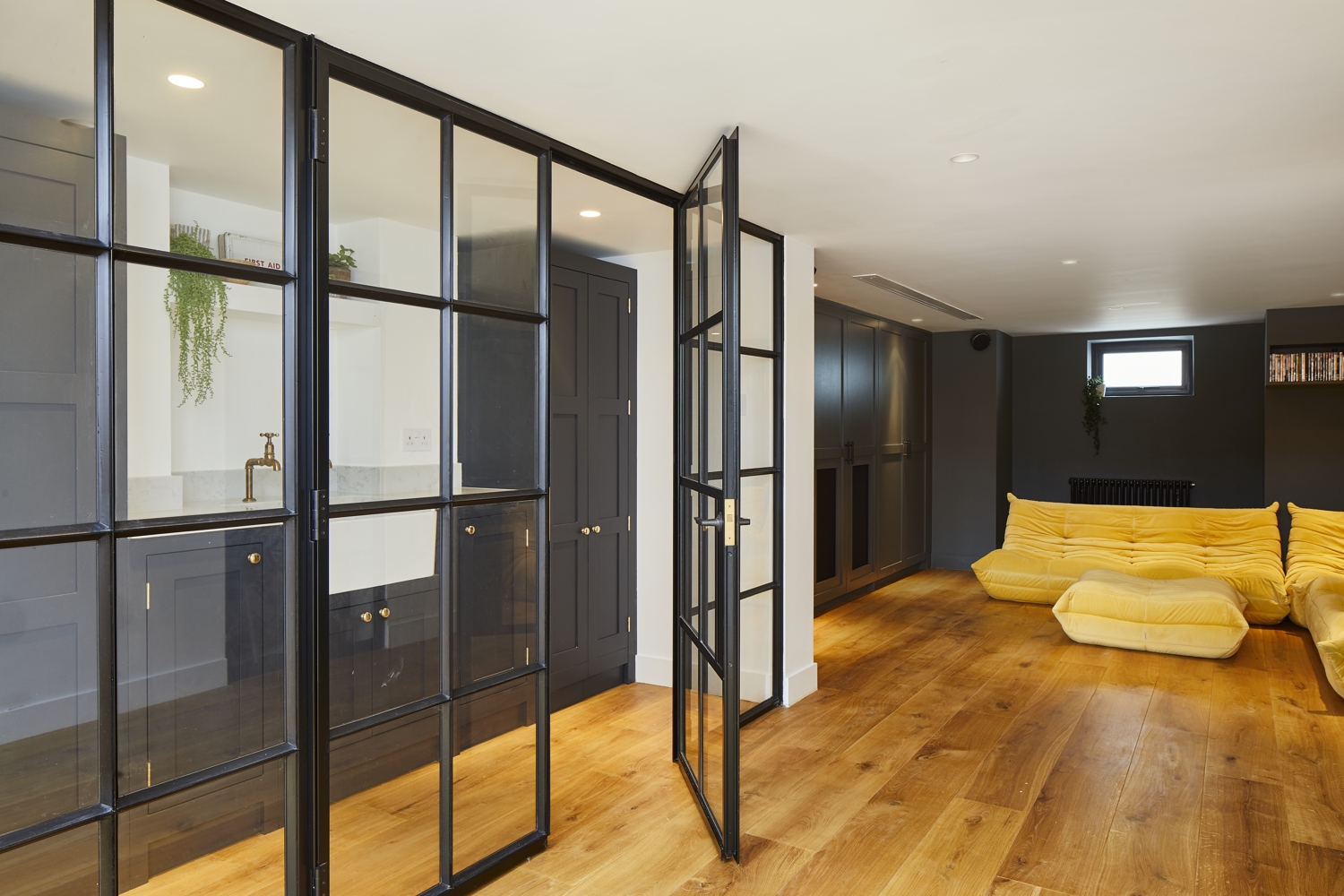
The choice between engineered or solid wood flooring usually depends on many factors including, how you want the flooring to be fitted, condition of your sub-floor and what factors are important to you (e.g. ability to sand & refinish, height of floor), cost, and of course, how well the flooring might best benefit a project. Of course, the answer is “it depends”.
There is no “one size fits all” answer. Once you’ve noted and understood all these factors, your ultimate choice will be easier — and more accurate.
Construction
As the name implies, solid wood floors are just that, a solid piece of wood, all the way through. Engineered hardwood flooring is constructed in a thin layer of hardwood veneer on top of multiple layers of different woods, known as ply layers.
Engineered wood floors are real wood floors and should not be confused for laminate flooring. Today, they make up a big part of the flooring market because they have some serious pros when it comes to their dimensional stability, usability and resilience.
Manufacturers may have a wear layer of 4mm and high-quality plywood of 2 – 4 sheets that are dimensionally stable and built to withstand temperature fluctuations.
Plank sizes
Because engineered floors have a more stable substrate, the individual planks can come much wider and longer than typical solid wood floors. Open concept designs lend themselves to engineered wood because the scale of the wide plank floor works better in a wide-open space.
Engineered wood also comes in much longer lengths than solid wood.
Durability
Water damage is one of the biggest concerns when selecting your floors; however, the greatest benefits that engineered flooring provides over solid wood is that it is the most durable option.
While the wear layer of engineered floors is often solid wood, multiple base layers are made out of different materials including plywood.
This plywood delivers exceptional durability and a resilient interior to effectively endure testing conditions such as high temperature, moisture, humidity.
This resilience against moisture makes engineered floors the superior option for highly humid areas.
Installation area
Where you want to fit your floors may help you to decide whether to choose engineered or solid wood flooring.
The wood density of solid wood is forgiving when it comes to high traffic areas as it can be sanded down and refinished multiple times. So if you are looking for flooring for an entrance hallway or living area then solid wood flooring could be a better choice.
If, however, you want solid wood flooring for a room where temperature or humidity is continually fluctuating, then that’s solid wood’s biggest drawback. For example, conservatories, rooms with a lot of glazing or even for a kitchen.
On the other hand, engineered wood flooring has enhanced structural stability designed to withstand slight changes in its surroundings. So it is a far more stable flooring material in rooms subject to higher moisture, temperature, and humidity.
Sanding
Solid wood is known for its longevity and can generally be sanded down and refinished more times than engineered wood.
If your wood floor gets scratched, you will need to refinish it by sanding down, and starting the staining and protecting process all over again. As long as you have healthy solid wood, you can do this 4-8 times.
Conclusion
Both have extensive pros and a handful of cons and as such, neither wood floor is “better” than the other. Picking an ideal floor for a project largely depends on all the different scenarios your project may play into, so take some time and plan your project ahead of time to pick the best option for you.
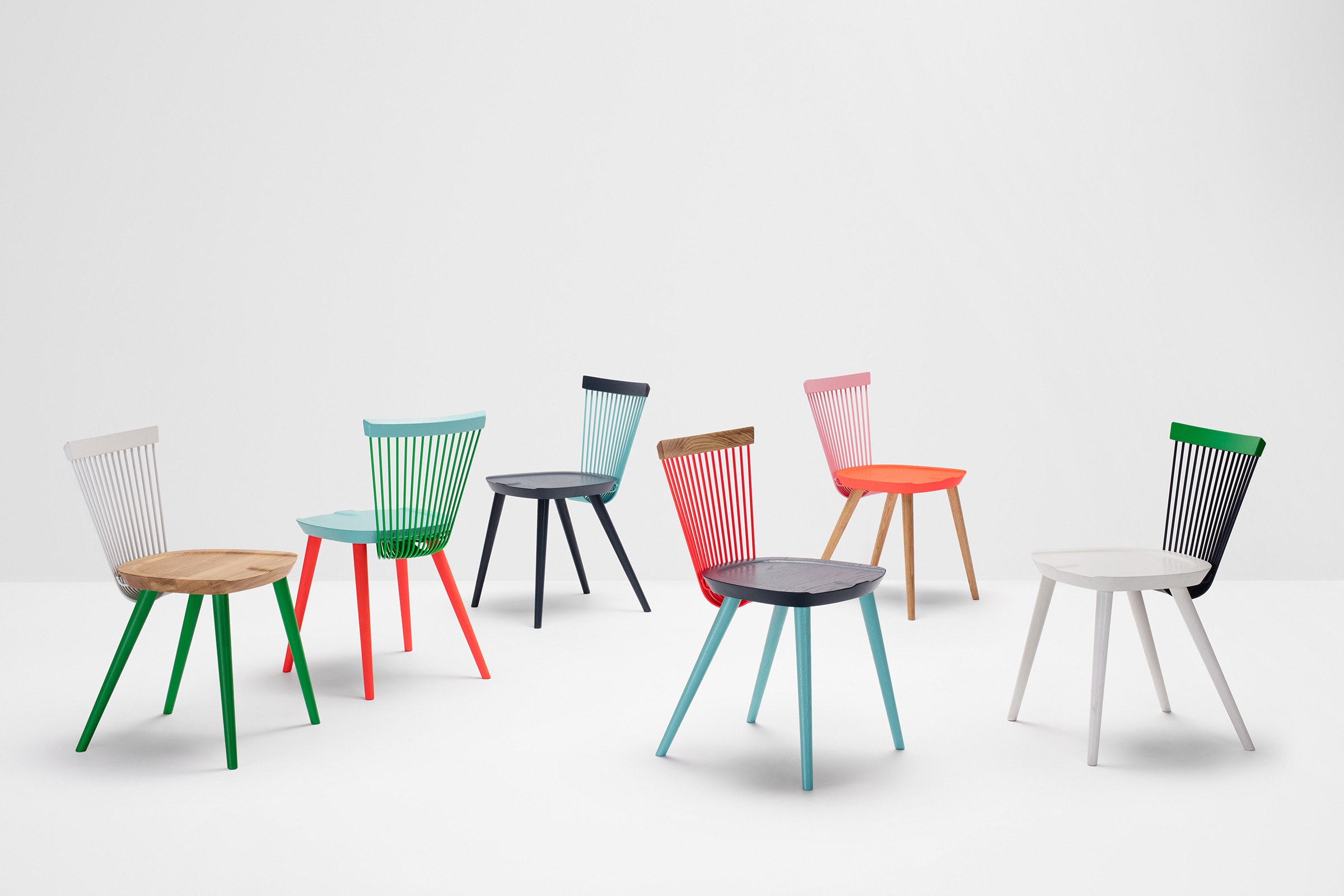
The event attracts talent from all over the world and continues to showcase an abundance of skill and innovation at the forefront of the industry.
2019 sees 100% Design Festival London returned for its 17th edition since its inauguration in 2003, with design-focused events happening across the city.
This years’ festival, which ran from September 14-22, spanned 11 city districts — from Kensington in the west to the Shoreditch Design Triangle in the east — curated with showrooms, pop-ups and site-specific installations.
Design, when showcased at forums in this way, becomes an industry where discussions on broader global issues can proceed. 2019 presented a massive array of expert talks and forward-thinking exhibitions, with “Sustainability” being this years’ key theme.
We showcased a selection of our samples alongside Hayche’s — our new Clerkenwell neighbours and design enthusiasts — at 100% Design (at Olympia) which is part of the London Design Festival.
Hayche creates original and meaningful furniture for discerning customers — embracing contrasts and celebrating differences, bringing together carefully curated and superbly crafted pieces that make people’s lives richer.
Design fresh at 100% design
This year we saw the return of Design Fresh, which was newly initiated in 2018.
The exhibition celebrates emerging talent selected from major UK design degree shows by Barbara Chandler, design editor of Homes & Property at the London Evening Standard.
Thirty designers introduced their explorative ideas and original products.
Each one either explored a breadth of pressing issues facing the planet today, from eco-aware concepts to innovative manufacturing processes, or as distinctive expressions of beauty.
Translating British heritage into the modern-day, an original 1967 Victoria line tube carriage acted as an exciting and immersive venue for the west Kensington design district.
Created by award-winning textile studio Kirky design, the train’s interior was brought to life in Underground Volume II fabrics, a new collection of velvets and readymade cushions in sophisticated geometries and trendy colours; which recreated iconic moquette designs used for seating fabric across the underground from the 1930s to the present day.
A sense of Finland
Voted as the happiest nation in the world for the second year running, guests had the honour to experience Finland’s famed well-being in an exceptionally staged pavilion at 100% design.
A sense of Finland allows visitors to experience the sounds, sights, touch, smell and taste of Finland’s happiness.
Curated by designer Hanna Laikola, founder of HEMLO, the installation is created in collaboration with renowned Nordic brand Tapio Anttila collection and Polar Life Haus.
They’ve specially constructed an eco-log house to be filled with the best of Finnish furniture, products and lighting, all centred around sustainability, well-being and healthy living environments.
Material studio at 100% design
Material studio brought together a showcase of 22 new and innovative materials from designers and brands across the globe, with a number of them being shown in the UK for the first time.
Created in collaboration with Material Driven, the show featured a careful curation of international and local interior brands such as Margarita Talep, Samira Boon, Red Mud, Baux, Elissa Brunato, Reef Design Lab and Criaterra.
New products with famed designers, such as Totomoxtle by Fernando Laposse, offered an unmissable opportunity for visitors to view brand new and classic collections up-close.
Conclusion
London Design Festival provides a platform for a mix of emerging design brands as well as established and influential names. The 2019 100% Design introduced an incredible line-up of forward-thinking exhibitors; showcasing the latest products across furniture, textiles, glazing, lighting, flooring, accessories and more. Conspicuous installations, inspiring collaborations and striking projects feature thought-provoking experiences and push the boundaries of innovative design.
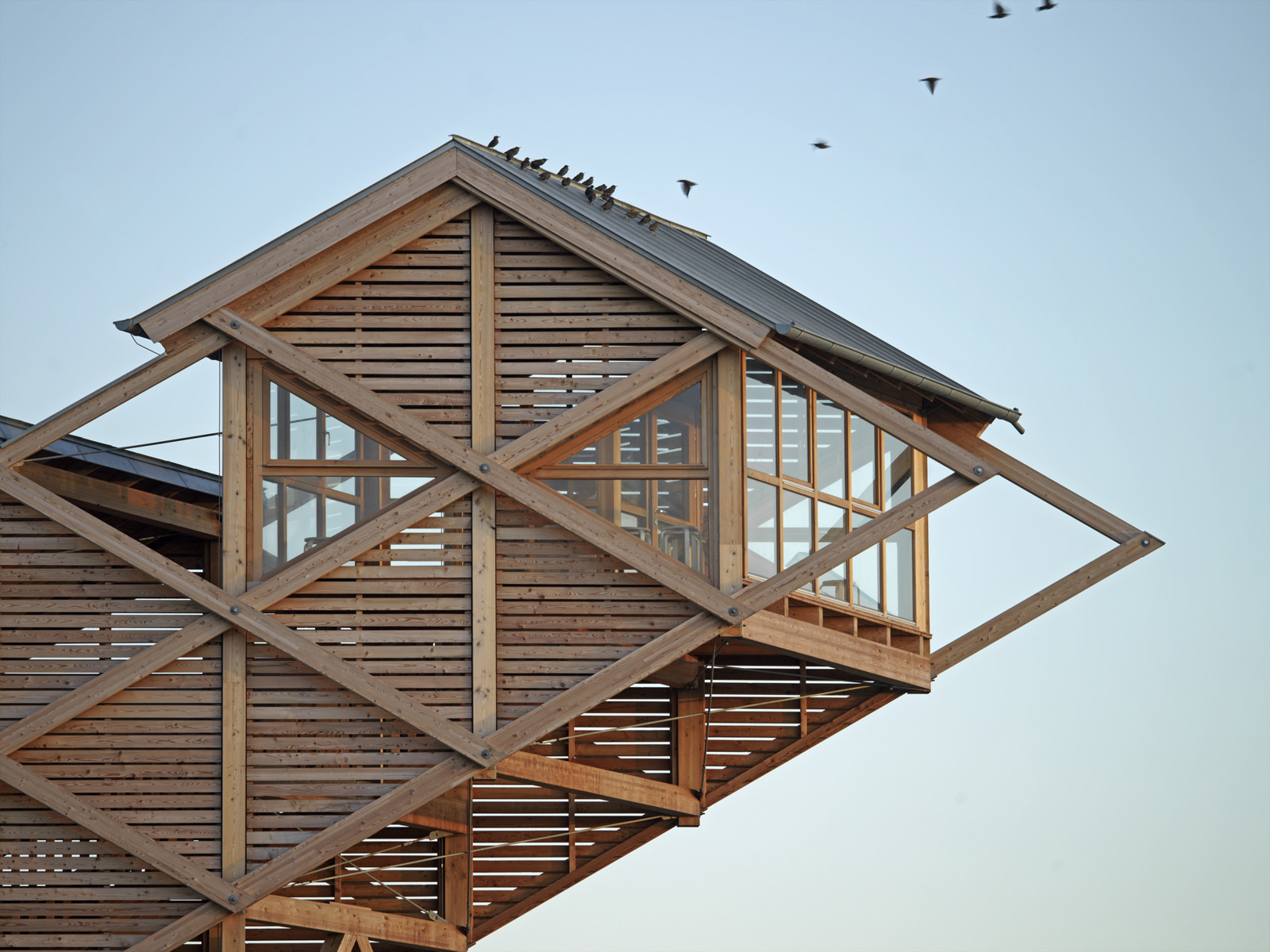
Environmental impact is a broad topic that more people and sectors of the economy are paying a great deal of attention to when making daily living and business decisions. Data on the matter is especially coming to light in the construction industry, which traditionally is known as one of the waste generating sectors.
With more eco-related challenges than ever, it has become increasingly essential to discover ways to contest for a more sustainable future.
And luckily, from companies to consumers, a change in how we view our planet means people are now taking greater steps to create a greener way of living that contributes to the concept of the circular economy.
Annually, in the United Kingdom alone, 70 – 105 million tonnes of waste is created from demolishing buildings — inducing a substantial environmental impact linked to energy consumption, waste production and direct or indirect greenhouse gas emissions.
According to research by Cardiff University, only 20% of that waste is biodegradable.
With intelligent design and a better comprehension of the biodegradable materials available in construction, it’s up to architects and building engineers to make the proper choices for the entirety of a building’s lifetime.
Reducing waste associated with buildings throughout their lifetime by designing a closed-loop material system made up of biodegradable materials is not entirely part of bigger mainstream practice.
As could be seen from the composition of demolition waste, just a tiny percentage is biodegradable.
Wood, an extensively used biodegradable material, only constitutes 3.1% of the total materials utilised. To boost the usage of biodegradable materials in buildings, a wider range of products is necessary.
More importantly, a clear case needs to be made for the use of biodegradable materials as an essential approach to waste minimisation.
Reimagining building materials
The construction sector currently accounts for 39% of global CO2 emissions — making the built industry among the least environmentally friendly in the world.
According to a report by Chatham House, cement alone creates about 8% of global CO2 emissions. As part of the global endeavour to avert climate crisis, our urban settlements will need to emerge from their dependence on concrete.
Numerous eco-friendly materials have emerged in the marketplace to assist in the reduction of the environmental impact of construction operations. However, identifying the planet’s eco-friendliest building materials could be somewhat tricky because different individuals have different definitions of what they consider sustainable.
Reclaimed timber, for instance, can be used for a plethora of construction purposes, such as structural framing, flooring, siding and interior fixtures.
Density varies depending on the sort of wood and a few stand up better with time. But most wood is vulnerable to pests and degradation, strengthening the necessity to thoroughly inspect every reclaimed piece.
Architects, designers and building personnel should all stay up to date with the trends and shifts driving sustainable construction. Placing eco-friendly materials in the forefront for any architectural project is an essential first step toward making buildings more sustainable.
Products made from organic, renewable materials as well as those that include recycled content are a wonderful place to start.
Looking to a sustainable future
Ushering in a new era of eco-friendly architecture is no simple task.
The construction sector is notoriously reluctant to change, but the industry has to adapt if it is to reduce its massive carbon footprint.
Green building materials are usually sourced from sustainable environments like timber forests. They can also be generated from innovative manufacturing processes that reduce harmful emissions into our surroundings.
Sustainable construction also takes into account a material’s appropriateness for the climate conditions in which it is used. Some materials tend to hold up nicely in anhydrous, cool environments but deteriorate in humid, hot locations. Degradation and replacement frequency need to factor into a material’s overall eco-friendliness to the environment.
Having a classic aesthetic that beautifies any interior space, wood is one biodegradable building material that’s earned its good reputation.
It’s practical and efficient both indoors and outdoors, and you are able to find a place for it virtually everywhere. Timber roofing is especially effective in the reduction of carbon footprint.
Future building plans will also need to place great emphasis on floating parks, rooftop gardens and other forms of urban greenery. As our cities shift toward cleaner, greener technology, standards for sustainability will fortify and designers and architects will need to adapt so as to pass stricter standards.
In pursuit of innovation
Sustainable architecture has given rise to a wave of innovative designs.
Architects and engineers alike are finding ways to utilise biodegradable materials wherever possible in place of toxic ones, like mercury or lead.
Driving change within the building industry is a massive accomplishment, requiring not only innovation but also real collaboration on an international scale.
This challenge comes at a time when urban growth is occurring at a quicker rate than before.
To revolutionise present practices, the general public and private sectors will need to work together closely.
Maybe what the industry requires mostly is a significant shift in mindset, moving away from minimising production costs and towards thinking about the long-term expenses of all design choices.
Conclusion
Since architecture is all about building something fresh and new, oftentimes we forget about the reverse side of the coin: tearing something down and disposing of construction materials. As the planet comes to terms with the degree of harm that non-biodegradable products and materials are doing to the environment, biodegradable options are a part of the future green technology expected to attract change. Relentless effort need to be made by designers, architects, engineers and manufacturers to create safer products employing biodegradable materials.

Known for his maximalist sensibilities, Brudnizki dreams up some of the world’s lavishly appointed commercial and residential addresses that defy convention and seamlessly showcase references from different time periods.
Martin Brudnizki’s intricate understanding of aesthetics was ingrained in him at a young age. His father was a mechanical engineer, while his mother worked as a stylist. The fusion of these two professions paired harmoniously, playing quite an influence in Brudnizki’s life, who became enamoured with aesthetically pleasing spaces and buildings.
In 2000, Martin set up his eponymous studio Martin Brudnizki Design Studio (MBDS) in London, and a New York studio followed in 2012.
Today, he has become known for his ability to understand, process and incorporate style and functionality, all interweaved to conceive eccentric and whimsical aesthetics.
Some of his works include Soho Beach House in Miami, The Beekman in New York, as well as London restaurants The Ivy, Le Caprice, and J Sheekey, and Annabel’s — Martins design concept is about creating ‘homes away from home’.
It is plain to see the meaning: as much as they are grand and glamorous, they carry with them a sense of intimacy and comfort.
One of our favourite interiors is London’s 34 restaurant — a gentlemanly haven on Grosvenor Square boasting a sense of familiarity yet with an edge of intrigue through the novel use of pattern and texture.
The interior features; burnt orange leather banquettes and dark woods contrasted with light panelled walls and stunning light fixtures inspired by English, Edwardian and Art Deco influences.
In the case of 34, Brudnizki merged the traditional masculine feel of a steakhouse with the neighbourhood’s glamour.
“Whenever I embark on a new project, I always consider first the context, the character of the city and the street, as well as the expectations of the client,” he states.
The main dining area features rich terracotta leather and mahogany wood chairs and banquettes, a floor design featuring reclaimed boards of oak and rosewood, and white crackle-glazed timber walls.
Meanwhile, the bar area showcases grained millwork and sparkling glass details.
Another inspiring architectural project — The Beekman Hotel, a luxurious yet historic New York City landmark that was originally designed by architectural firm Silliman & Farnsworth in 1883 and was used for a variety of functions over its life before becoming an opulent hotel.
Martin Brudnizki’s design team created a lush and sophisticated space that proudly displays the beauty of the edifice while maintaining its historic patina.
The rich architectural story of the Temple Court guided the design of the hotel. From its distinctive Queen Anne exterior, to the Bretonian beauty of the dilapidated Victorian interior found inside, The Beekman has such provenance.
A small-scale black and white marble mosaic floors in a hexagonal pattern leads to a reception desk upholstered in a patchwork of colourful rugs, further adorned with a dark, antiqued timber top.
The surrounding walls are panelled with rich timber and feature a decorative freeze, above which are walls which have been stripped back to reveal the original plasterwork. Hanging overhead are whitewashed timber chandeliers decorated with gold leaf to further magnify an elevated sense of being whilst staying true to the building’s organic beauty.
Accents of bold orange and blue can be found around the room, adding a unique and dynamic tone to the rich timber hues. The seating comprises of a range of armchairs and sofas, upholstered in yellow chenille and green mohair and sits atop a large colourful rug.
The interior’s public spaces are cosy and inviting, composed of rich dark finishes with accents of solid jewel-toned blocks of vibrant luxury furniture in vintage pinks, greens, reds, yellows, and blues.
Conclusion
Brudnizki is internationally renowned as a top interior and product designer. His devotion to functionality coupled with the love of layering diverse materials, textures, and styles, allows him to craft an environment that resembles a personal and unique touch to each client’s specific lifestyle. Overtime. The sought-after designer has acquired incredible proficiency in design, specialising in high-end and luxury schemes.

Slow design is a unique and vital form of creative activism that offers an opportunity to find fresh qualities in design research, ideation, process and outcomes — and ideally slow down the metabolism of people, resources and flow. A process that is deeply conscious of the lifespan of its end product, delivering new values for design, and contributing to the shift towards sustainability.
In 2008 Carolyn F. Stauss, founder of the SlowLab of Amsterdam, and Alastair Fuad-Luke published the paper ‘The Slow Design Principles — A New Interrogative and Reflexive Tool for Design Research and Practice’, describing the six principles of slow design they have developed, with which they wanted to “… posit a new evaluative tool to encourage design practices to orientate towards social, cultural and environmental sustainability under the rubric of slow design.”
There’s also an inherent need to design spaces for thinking, reacting, dreaming and musing — in order to “satisfy real needs rather than transient fashionable or market-driven needs” by creating moments, products and design outcomes that carry a message of ecological soundness and consumer enjoyment.
The six core principles of slow design are not a design method, but rather, a philosophy to inspire designers and stimulate thinking in new ways. These include: reveal, expand, reflect, engage, participate and evolve.
Principle 1: Reveal
Slow design uncovers over-looked spaces, experiences, materials and processes in day to day life that are often missed or forgotten in an artefact’s existence or creation.
The manifesto urges people to “think beyond perceived functionality, physical attributes and lifespans to consider artefact’s real and potential expressions.”
Principle 2: Expand
Slow design considers the real and potential “expressions” of artefacts and environments beyond their perceived functionality and physical appearance.
The highly conceptualised principle suggests that we should consider aspects beyond shape and aesthetics, instead pay more attention to the form of interactions that take place between human beings, objects and spaces.
Principle 3: Reflect
Slowly-designed artifacts and environments induce contemplation and ‘reflective consumption’. “Product designers are questioning not only ecological values, but also perceptual and emotional experiences that the unique materiality of products can deliver,” Strauss and Fuad-Luke state. They encourage designers to create with wellbeing in mind, and emphasise ephemeral beauty that reminds us that everything is transient and short-lived.
Principle 4: Engage
Slow design processes are “open source” and collaborative, relying on sharing, co-operation and transparency of information so that designs may continue to evolve into the future. Today design charrettes, in which several participants meet to share ideas, as well as brainstorm solutions to design and architectural problems, are another example of transparency and collaboration.
Principle 5: Participate
Slow design encourages people to become active participants in the design process, embracing ideas of conviviality and exchange to foster social accountability and enhance communities. Clients who are a part of the design process are generally satisfied with the end result.
Principle 6: Evolve
Slow design recognises that richer experiences can emerge from the dynamic maturation of artifacts and environments over time. This means looking ahead, evaluating processes and outcomes that are most reliable and needed for a better future, and becoming agents of both preservation and transformation.
Several design projects have been inspired by the slow design principles. An example is the Sasa Clock by Icelandic artist Thorunn Arnadottir. The refined and elegant Sasa Clock asks the user to relax, slow down and let time flow, as there is no quick way to read it. The clock comprises of brightly colour-coded necklace beads which revolve around a slowly rotating stainless steel carousel, with each colour representing an increment of minutes or hours
The beads are stained beech wood; orange represents hours and gold and silver beads signify noon and midnight. With an almost imperceptible slowness, the clock drops a bead along the cord at five-minute intervals. You can always stop time completely from the wheel, and wear the beads proudly as a statement of freedom from time. The clock is available in two versions and colourways; natural wood with white hour beads and blue with orange hour beads
“As the carousel turns, it slowly advances the wooden bead until it drops down a gap in the necklace. The last bead to have dropped indicates the correct time. The action of the beads slowly edging towards a precipice and then dropping – like a dewdrop from a leaf – gives us the impression that time is moving more slowly.” — Daniel Estes, product developer.
Conclusion
Slow design allows for a more unique, detailed and honest design process, and it’s the ultimate expression of authenticity. It aids at reconnecting the designer with their materials and processes, asking them to take responsibility for their choices. Slow design will provide the means for new philosophical journeys, assurance of appropriateness in design outcomes, and restoration of integrity and meaningful connection to places, spaces and experiences — unconstrained by the mantle that economic imperatives have driven, and continue to drive.

Have you been feeling a little stressed lately?
Research suggests that when we are under pressure and experience anxiety, our brain’s ability to think logically goes “offline” as a result of our bodies being wired to treat stress as a threat. You can imagine how this affects our mental well-being, performance, attitude and physical state both at home and at work.
Mindfulness by definition is, “the practice of maintaining a non-judgmental state of heightened or complete awareness of one’s thoughts, emotions, or experiences on a moment-to-moment basis.” Seems simple enough, right?
Today, mindfulness is an essential aspect of the wellness culture which permeates modern society.
Gaining prevalence in recent years, psychological wellness is widely considered a significant element to a happy and joyful life, and hence the intricacies of mindfulness have come to be a playbook for anyone seeking to achieve their own state of peace.
Reinforcing the fundamentals of wellness begins with personal spaces — and there are simple means to use home decor to inspire mindfulness in everyday life — notably by embracing organised spaces and clean lines that provide less visual stimuli.
The best part about creating such a space is that there is no wrong way to do so. All that’s important is a little time and your good intentions. Below are ways to help inspire mindfulness at home.
Identify the purpose of your space
Looking to create a room for mindfulness in your home?
The first thing is to consider how you will be using your space.
Another crucial part is setting your intentions for that particular area. Different purposes require different attributes.
For instance, if you wish to create a meditation corner, you will simply require a small space with comfy cushions, greenery and perhaps a timer nearby. Once you set your intention, it is time to discover where you’ll be spending your time.
Find the perfect spot
Together with your Intention in mind, search around your home to find an ideal spot. If you want to create a meditation zone, you’ll want to find an area that’s quiet, that you can claim as yours and is free from disruption. For yoga, you might require a spacious room, possibly with a mirror.
Remember that the spot that you choose may require a bit of transformation and decorating. Some areas to consider for your personal space include:
- spare rooms
- quiet corners
- small patios/screened-In patio
- garden spaces
- a space in your backyard
Personalise your space
Make your space your own by personalising certain aspects of the area that are most important to you.
This doesn’t have to be one particular area, but the different rooms in your home that you enjoy spending time in.
Perhaps you may also wish to add fabrics, art pieces, cards from loved ones or other touchstones.
These are just a few elements you can incorporate to spark inspiration — what you do with your space is entirely up to you, and should reflect your personality and unique taste.
Set the ambience
Add a little ambience to your interior space by introducing organic candles, incense and oils into your room.
The sense of smell is one of the most primal senses. Your olfactory glands can transport you a different place and time.
Familiarity is a significant facet of a mindful home, and psychology today indicates that scent is one of the most effective tools for recalling memories. Whether you are looking to call upon reflections of home or even create your own, developing a signature scent for your indoor environment is a terrific way to get started.
Ensure every object has a purpose
An essential ideal of mindfulness is to ensure that each act, or in this case, each item in your home serves a purpose.
While impulse buying may be tempting when redecorating, consider the reasons why a piece of home decor speaks to you prior to making a purchase.
Buy new items sparingly: only when you’ve got a specific need for them or when you are sure they will contribute your home in a positive manner.
Conclusion
‘Creating a space for mindfulness in your home allows you to practice wellbeing in a way that reduces stress and leads you towards a more joyful and peaceful life. In planning that space we recommend you consider three key points;
- Work out how you wish to practise mindfulness, so that it helps you find the perfect spot
- Decorate it in a personal way that helps you to switch off from distractions
- Create the mindful mood with scent and decor
All that’s left to do after that is dedicate some time each day to use your space to recharge.’
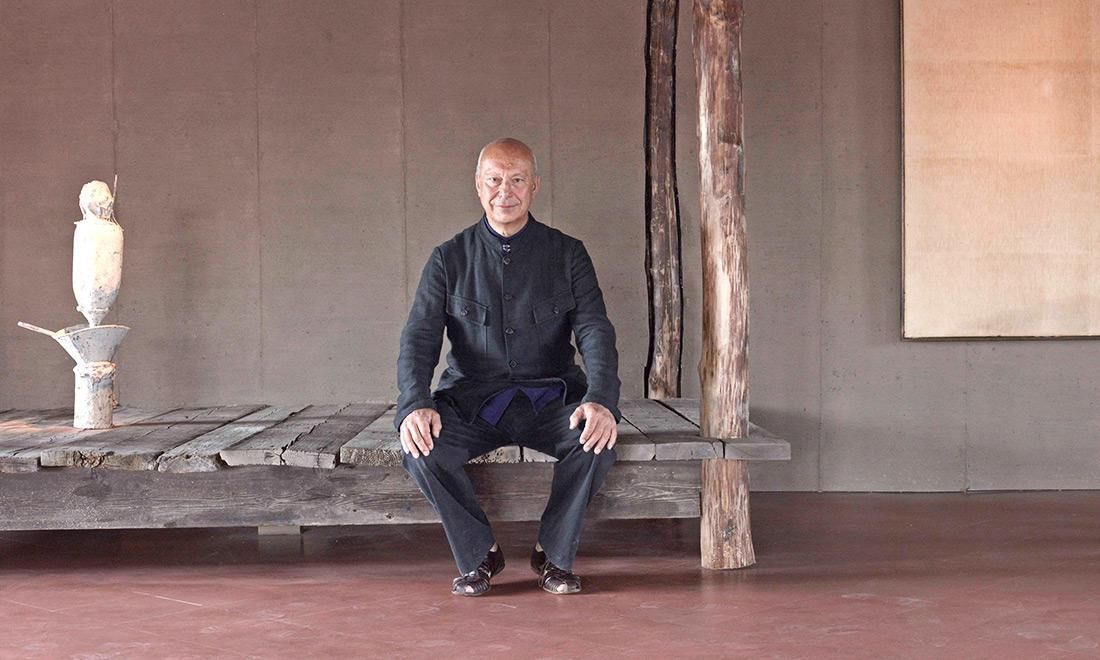
You cannot talk about interior design without mentioning Vervoordt’s cerebral, unique taste. His incomparable eye and keen sense of beauty has existed for more than just a while. Setting up base in an old yet classic Belgian castle, over the years he has evolved an unmistakable harmonious style, becoming a patron of the arts across the globe, whilst curating multiple distinguished exhibitions.
“Collecting is in your blood. My mother loved it as well. We didn’t live in a grand house, just a small one, but she always made it look beautiful. She lit candles every night. I love rooms with atmosphere.”
A timeless approach
The nature of a trend is that Architects and Interior designers need to be constantly updated with evolving style and trends to stay ahead in their game.
However, some designers are known for their signature style that many try to replicate. Ever since the green initiative took precedence and sustainability became an important concept commercially as well as on a personal front, there has been an attempt to incorporate it into the world of architecture and design. The use of durable materials like reclaimed wood, or natural fabrics add a touch of nature and sublime beauty to your home. One of the most acclaimed designers, who has great respect for durable materials and traditional craftsmanship is Axel Vervoordt.
The line between different time periods appears to blur into soft-toned rooms, that exude admiration for the history and the original character of the interior space. His prominent bespoke projects bring together elements of nature: light, water, metal, wood — and combines these with his inspired arrangements of objects and modern aesthetics.
However, as easy as it might look to bring together the old with the new, Vervoordt emphasises that decorating isn’t so much about aesthetics as it is about cherishing both the past and the present:
“I mix art and objects from different periods. We’re all products of the past, but we must also take inspiration from the present. And we have a responsibility to build a new society for tomorrow. It’s a pity when collectors go contemporary and get rid of their older art. I tell them to keep the best of the old and search for interactions with the new.”
Wabi Sabi
Rooms with an atmosphere is a slight understatement; his refined yet elegant interior aesthetics breathe an air of eastern serenity. Which isn’t a mere coincidence: the essence of wabi sabi — a Japanese philosophy that values respect and simplicity and sees beauty in imperfection and authenticity — an aesthetic notion that transcends traditional design and observes the beauty found in imperfection.
Quiet and slow, it observes cracks, ageing and most importantly, authenticity; an attitude that’s deeply cemented in his work. Earthy colour palettes, raw unfinished woods, antique panelling, textural linen and humble and exquisite objects alike come together to create what he defines as “harmonious living”.
The TriBeca Penthouse
One of his most sublime and ethereal designs is the TriBeCa Penthouse. The much talked about penthouse atop New York’s Greenwich Hotel was designed for Robert De Niro.
The 2,800 square foot penthouse is tastefully done and is an eclectic mix of antiques, reclaimed materials, natural fabrics and neutral shades. Vervoordt worked with Japanese architect Tatsuro Miki on the project based on the ancient Japanese wabi-sabi principles of purity and simplicity. He incorporated sustainable materials like reclaimed wood, stone and steel. Many of his designs have Asian motifs and an East meets West blend. The cohesive idea is to find harmony in chaos reflected in rough finishes and the resurrection of vintage and reclaimed pieces.
“We want to express a Tribeca character in the most humble way, because the architecture is so simple, it belongs as much to the past as to the future,” says designer Axel Vervoordt.
Background
Axel Vervoordt is a Belgian interior designer, antique dealer and collector regarded as one of the most original and influential figures over the past four decades in the field of art and design. Vervoordt has a unique take on designing drawing from different cultures and historical periods. Apart from dealing in antiques and designing stunning interiors, Vervoordt is also a curator and furniture designer who constantly encourages upcoming singers, performers and artists.
Axel Vervoordt believes in the beauty of simplicity and looks for harmony in imperfections. He embodies soul into his designs with materials like reclaimed wood, refurbished materials, antiques, muted colours and natural yet luxurious fabric décor.
What sets Axel Vervoordt apart from other designers is his raw and earthy designs. His style is poetic and enchanting without being overly dramatic or designed. He keeps the décor understated, letting the gorgeous antiques and reclaimed pieces immerse you in their undiluted beauty. In Axel Vervoordt’s own words, “Simplicity is the ultimate sophistication”
Conclusion
To see an Axel Vervoordt space is to be immediately transported into a world of raw, effortless elegance. His design dialogue on natural calmness in the spaces he designs is one that resonates with one profoundly. His pursuit for harmony results in a remarkable balance of opposite aesthetics: raw and refined, airy and moody, detailed and meditative, serene and uneven.
The use of roughly poured concrete reclaimed wood, and antique object produces a rare authenticity, at the same time appreciating the imperfections found in the materials he uses. Above all, there is a sort of patina to Axel Vervoordt overall design signature — it’s a rich blend of old-world simplicity with contemporary sophistication that is hard to recreate, and therefore uniquely, so naturally, him.

Oak is the staple of the lumber industry, by far the most popular species and most widely utilised across Europe.
Its existence in our everyday lives goes unnoticed to most, yet it’s everywhere.
Designers and architects who recommend wood flooring, veneers, cabinetry or millwork on projects are intimately familiar with this wood type.
Attributes of European Oak
European Mountain oak is exceedingly strong, heavy and durable.
Also, the character within the oak is better distributed throughout the tree because of the steady and regular growing pace of the tree, this makes it a perfect and reliable choice for our floor finishes.
Similar to genuine reclaimed oaks from at least the last century in Europe, slower grown oak has a tighter grain and produces a more stable wood structure.
Only with a significant amount of tannin in the wood can we create our hand-made and custom finishes.
We pride ourselves on sourcing our new European oak from specific forests that run across Northern Europe.
Our Mountain oak is slower grown because of the rocky soils with less water content, and shows rich and consistent character which is vital when supplying such large quantities of flooring and manipulating tannin levels within the oak itself.
European Oak is good for the environment
If you have any concerns regarding how you could possibly be impacting the environment through purchasing your new oak flooring, please understand that wood is the only naturally renewable construction material, and far less energy is consumed in timber production, processing and disposal than any other building material.
European oak stands as one of the most environmentally-friendly woods available.
Requiring no chemical treatment or industrial reprocessing, the process of oak wood production is remarkably straight-forward, whilst the slabs of oak timber can also be reused and recycled as need be.
European Oak is flexible to use
Another benefit of using oak wood is its flexibility.
Regardless of whether you’re installing wall-cladding, installing floors, raising a stair, or the entire structural framework of a house, an oak beam is simply one of the best materials to use.
European Oak improves with age
European mountain oak actually improves with age like good wine.
Even within a few years, the colour will get richer; and with proper care, it really gets better and better.





